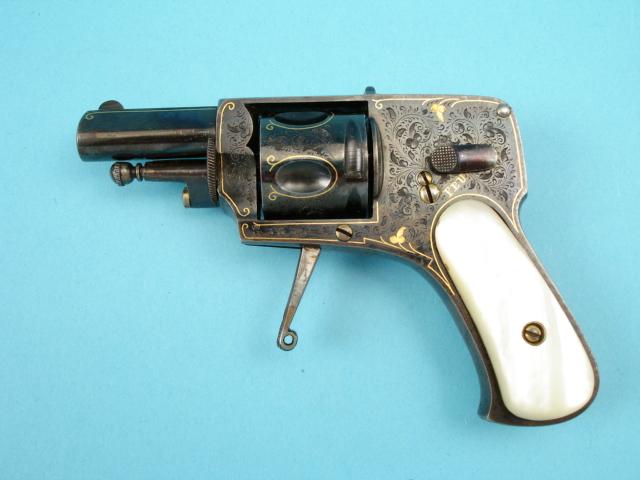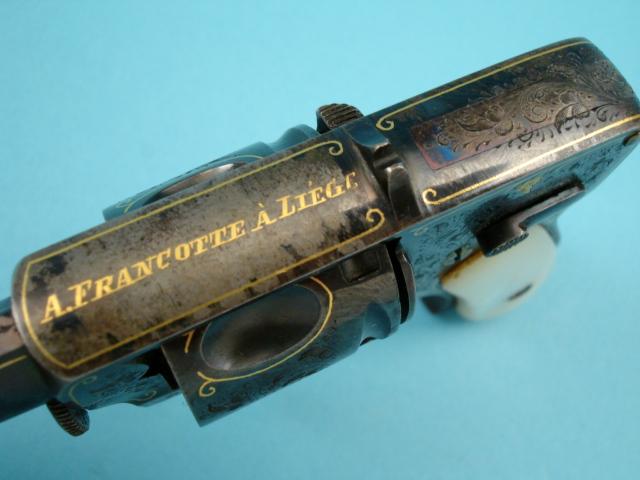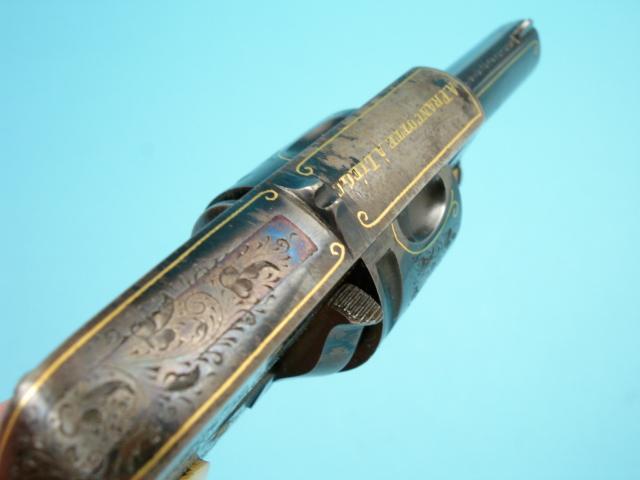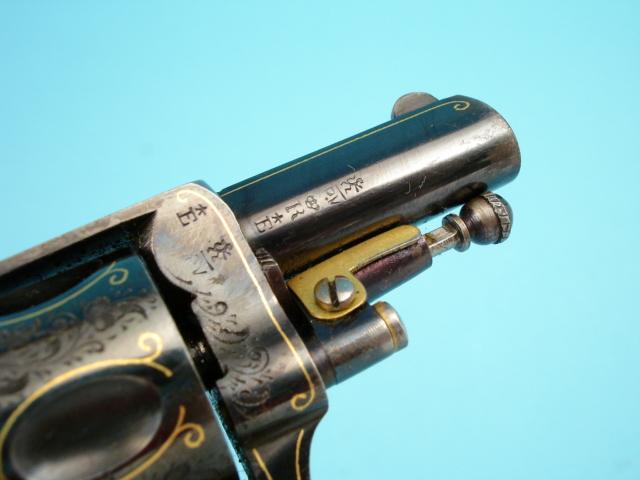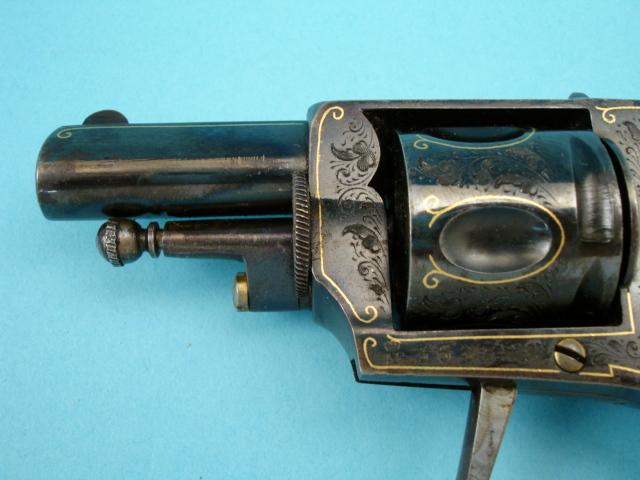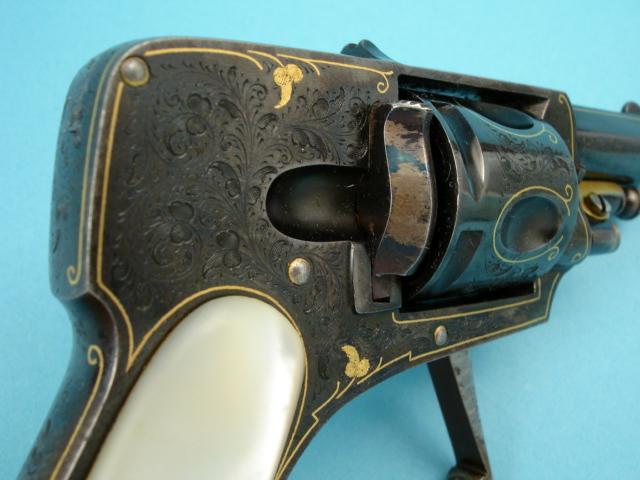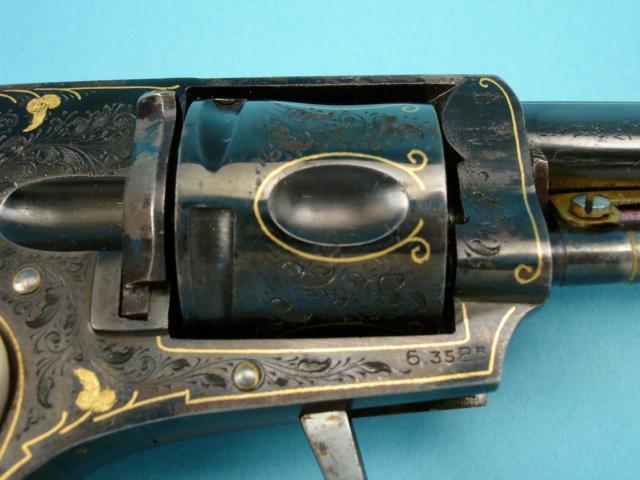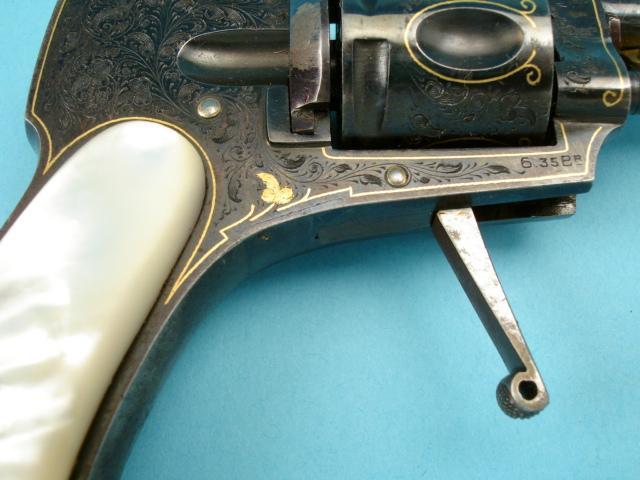Some of the most beautiful work of this craftsman are in this book “The Francotte Dynasty”.
For more detail see: The Francotte Dynasty
FRANCOTTE Auguste
This revolver by Auguste Francotte, clearly characterized by the crowned AF logo, is stamped with the numbers 34 (cylinder, barrel) and 435 (most likely serial number). This maker was one of the most prominent members of the Liège Francotte gunmaking dynasty, very well documented both on the website and in a book dedicated to him, see :
The request essentially concerns defining the "Model" and the dating (date range) of this example.
This is most likely the late conversion of a pinfire "Lefaucheux system" model into a centerfire weapon. This is often the case with open-frame revolvers with a centerfire. Below is a comparison of the example examined here (right) and a pinfire revolver by Auguste Francotte identified on the website (left).

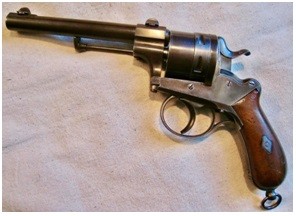
Photo 1 Photo 2
The similarities indeed support this conversion. The pinfire revolver shown on the left is identified as a "Model 1863."
The revolver examined here is not an isolated case. Several of its counterparts can be found on the website and in the book cited above, such as the one intended for Jérôme Bonaparte (on the left in the image below), chambered in 11mm Gasser, and bearing the serial number 402:


Photo 3 photo 4
These two revolvers are identical in design, notably with their round barrels and similar serial numbers. We can therefore assume that they are contemporary, produced during the 1870s (the period in which 11mm Gasser ammunition was used). This dating is supported by the control hallmark surmounted by a crown (from September 30, 1853 to January 26, 1877) and the presence of a "Gasser" safety as on the 1870 model known as "Monténégrin" by Léopold Gasser. Another similar revolver (12mm caliber), also with a round barrel, is offered on an auction site, bearing the serial number 357 and with an estimated production year of 1871, see:
https://www.lotsearch.de/lot/revolver-francotte-kriegsmarine-um-1871-45785787
Finally, identical revolvers can also be found except for their octagonal barrel, see for example on the website and page 217 of the reference work :
In conclusion, analysis of the
provided evidence indicates that this revolver is a conversion of a pinfire
Francotte model 1863 for a large caliber centerfire (11 or 12mm). Production of
the weapon can be dated between 1870 and 1877. Note that this conversion is
found on several examples.
Chris, HPH, Marcel
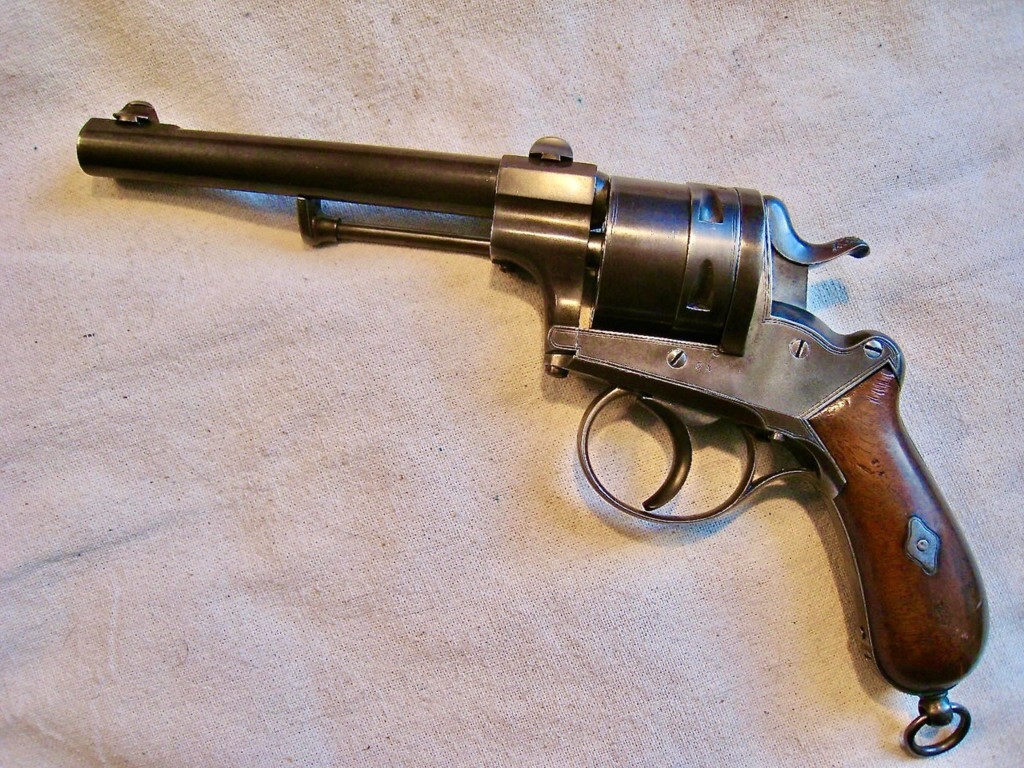
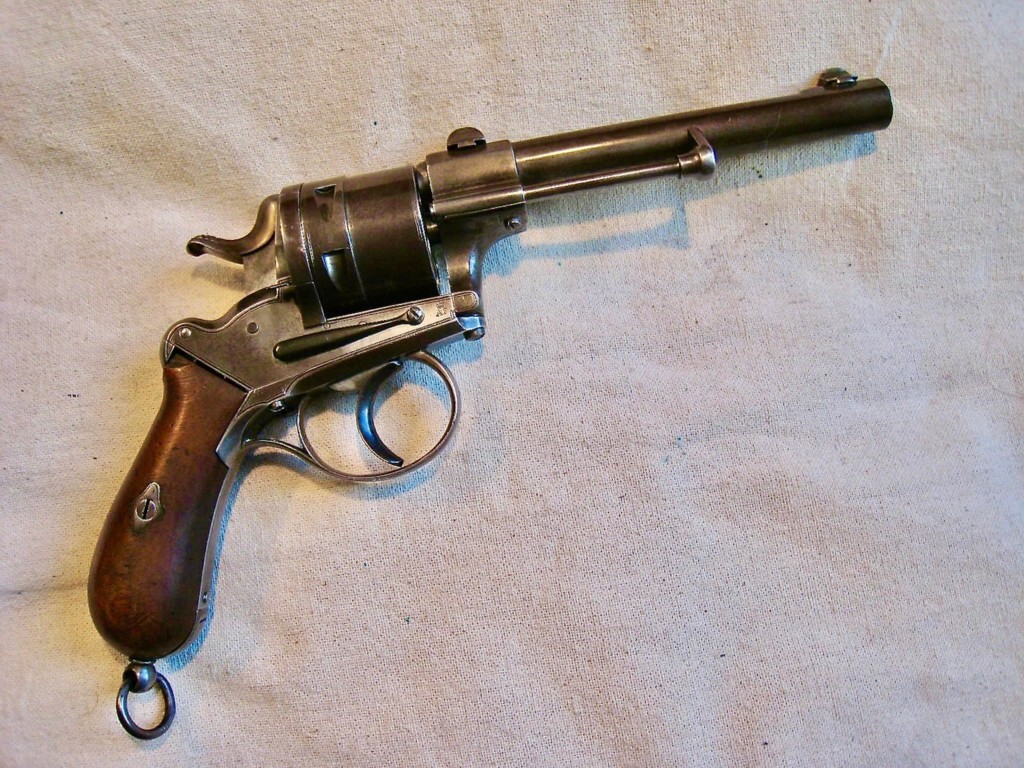
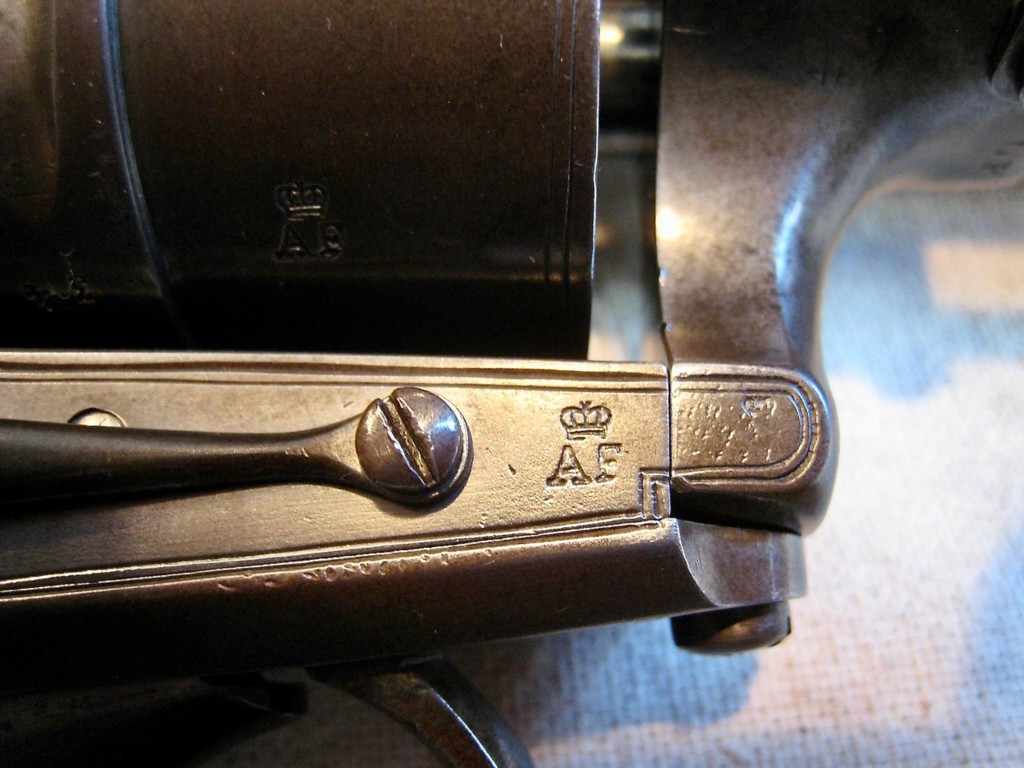

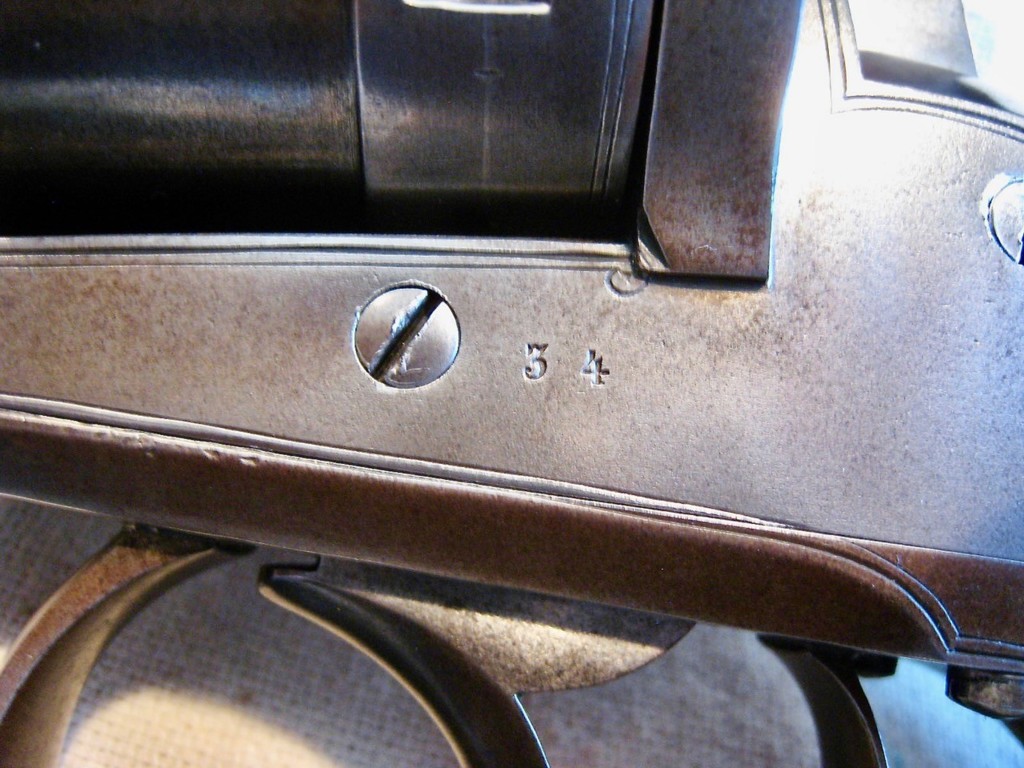
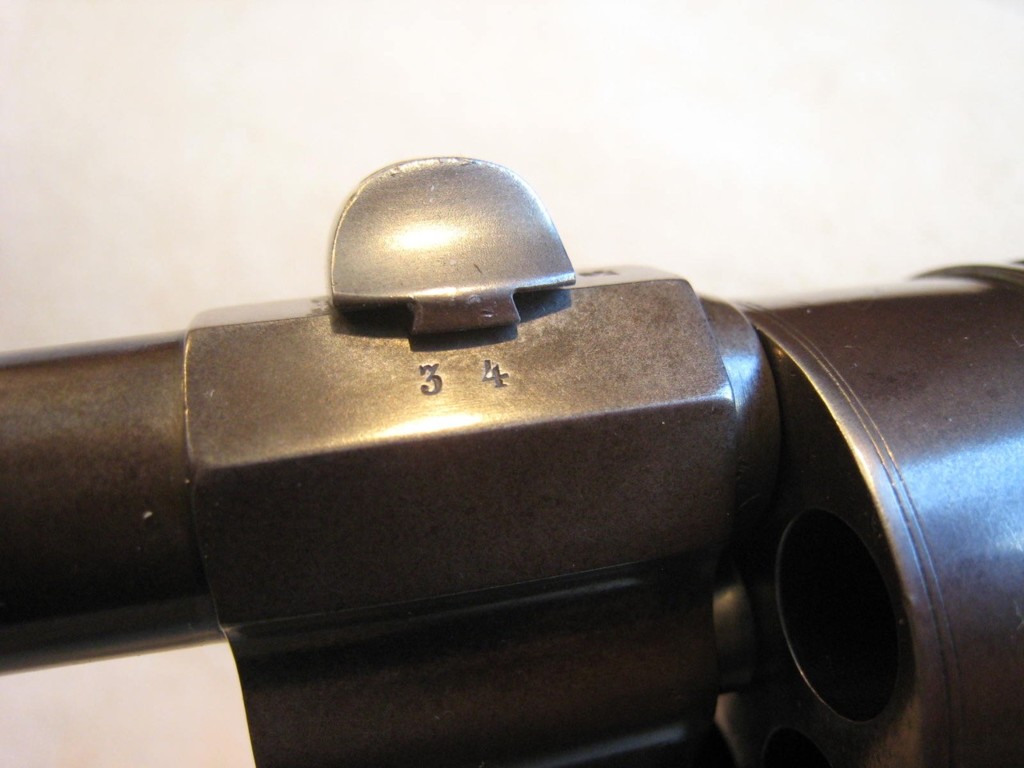

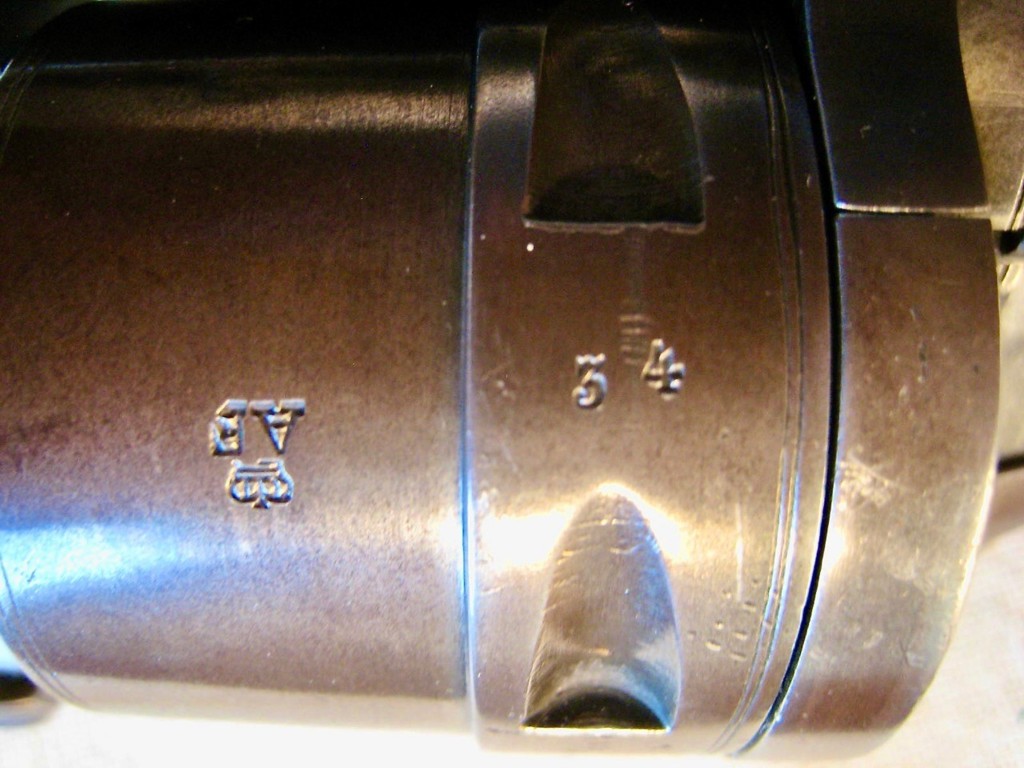
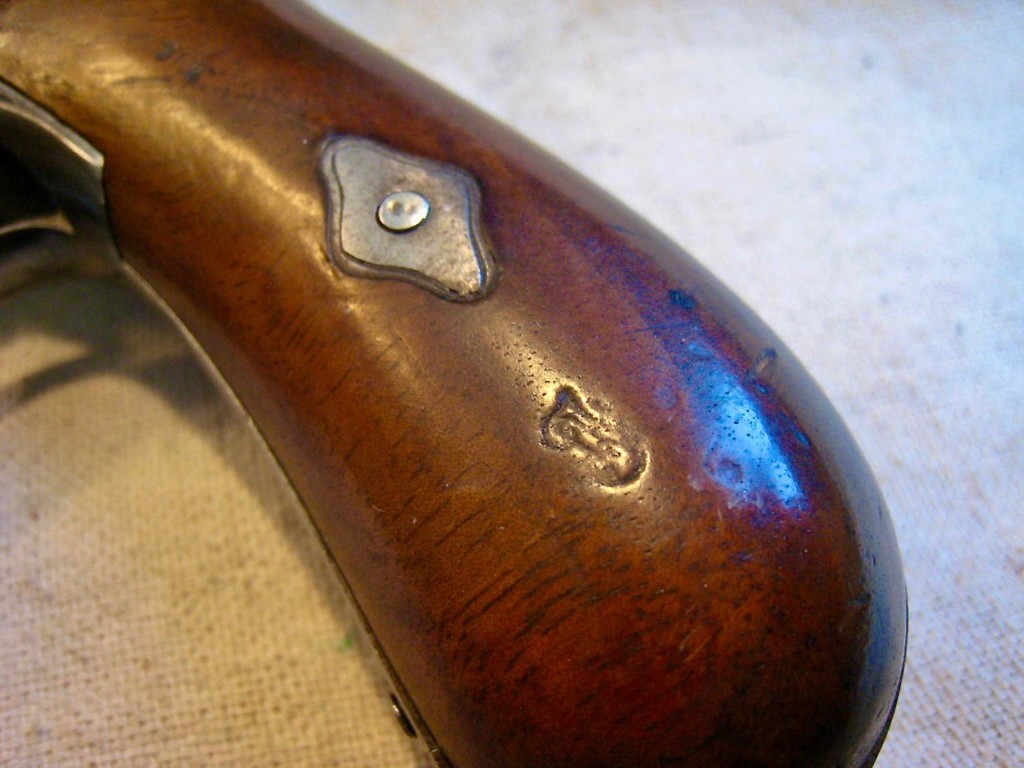
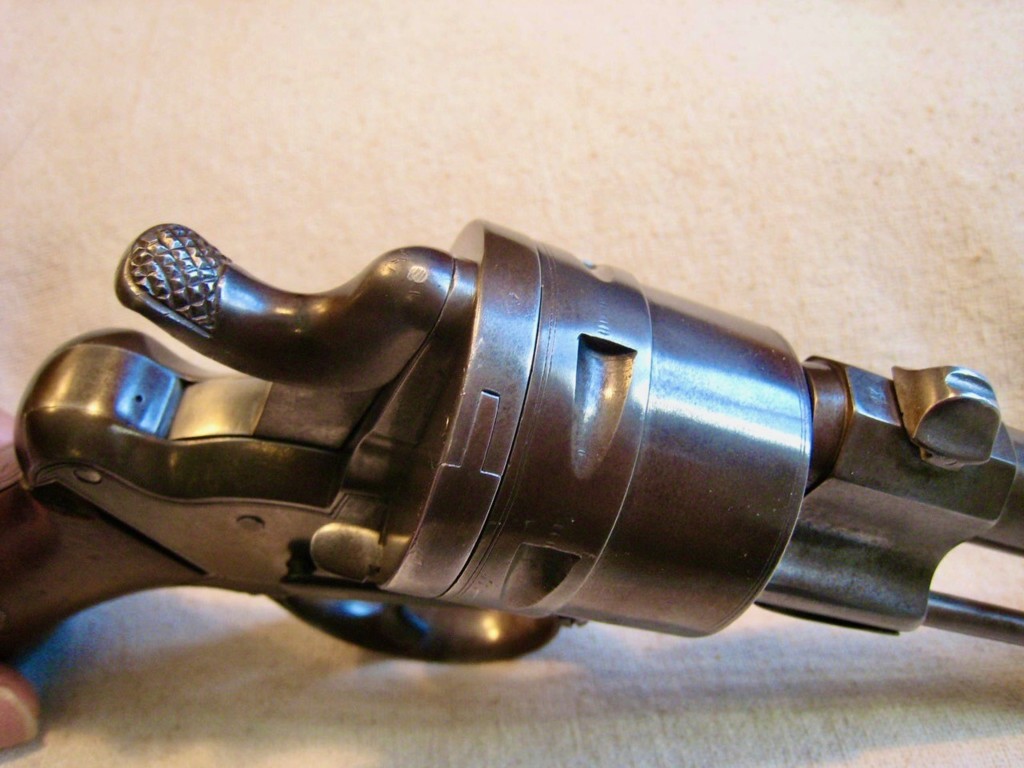
FRANCOTTE Auguste
Fauré Lepage is probably the dealer
FRANCOTTE Auguste
Here is a
FRANCOTTE
in the 500 Webley or Eley caliber. In August of 1877 it was presented to an
official (perhaps Argentine Army or Provincial Police) in one of the Provinces
of Argentina. The engraving on top of the revolver reads as follows:
El
Gobierno de la Provincia CC, Al Capitan Doroteo Valenzuela, 14 Agosto 1877,
Chapon, Buenos Ayres (evidently the business that did the engraving)
I have
not been able to find out anything about this particular Captain, in part
because I have not found out what CC means, it could be an indication of the
Province, which in that case could be Corrientes or perhaps another of three
different Provinces that begin with C. Since this was engraved in Buenos Aires,
it may well be that CC stands for the military unit in which Valenzuela was
active, perhaps: Cuerpo de Caballería.
In any case, that information is not relevant to the
origins of the revolver. I am not sure which
FRANCOTTE
revolver this is (a military or civilian model?), nor when it might have been
manufactured (certainly before 1877). Many officials in the Argentine military
had to purchase their own sidearms. This one was certainly purchased by the
Province itself, but was probably not an arm purchased through a Government
contract with European suppliers, almost certainly it was purchased through a
gunshop or retailer in Buenos Aires.
This particular revolver is similar to #422 on the
page of the FRANCOTTE
catalog on your website, but the cylinder is different and a couple of the lines
(the bulge on the grip) are a bit different.
Here is
the information I have:
FRANCOTTE
DA Revolver, cal 500 Webley, serial # 418 length: barrel 124 mm, overall length
254 mm
Marks (it
looks like the revolver was re-nickeled when the engraving was done, thus the
marks are not real clear):
- on
cylinder: pre-1893 Liege proof, another mark with a T, not clear
- on left of action:
crown/AF
- on
right of action: # 418
There are
no other marks that are visible that I can see.
Richard
Dear Monsieur Daubresse,
Regarding the Francotte revolver in .500 British caliber engraved:
(From) The Government of the Province of Chaco (thus the “CC”) to Captain
Doroteo Valenzuela
14 AUG 1877 Chapon Buenos Ayres
The region of “El Chaco” in South America was hostile “Indian territory” until
the 1800’s. The natives were tough hunters who lived off the land.
At the end of 1877, 67 colonizing Italian families sailed from Genoa to
settle in the area, which was not yet a province; rather, a “National
Territory.” They arrived at the beginning of 1878. More Italian families
followed.
Although there were five towns in the area by 1884, it is interesting that the
revolver is engraved as being a gift from the Province of
Chaco, since the area was not officially declared a province until 1951. Perhaps
it was a bit of wishful thinking?
One of the five towns was ‘Resistencia” (“Resistance”), named after the fierce
resistance to an Indian attack in September 1884. Today, “Resistencia” is the
capital of the Province of Chaco.
Finally, “Chapon Buenos Ayres” roughly means “Steelworks Buenos Aires.”
Hope this helps.
Best regards,
Rey Marsella
Florida, USA
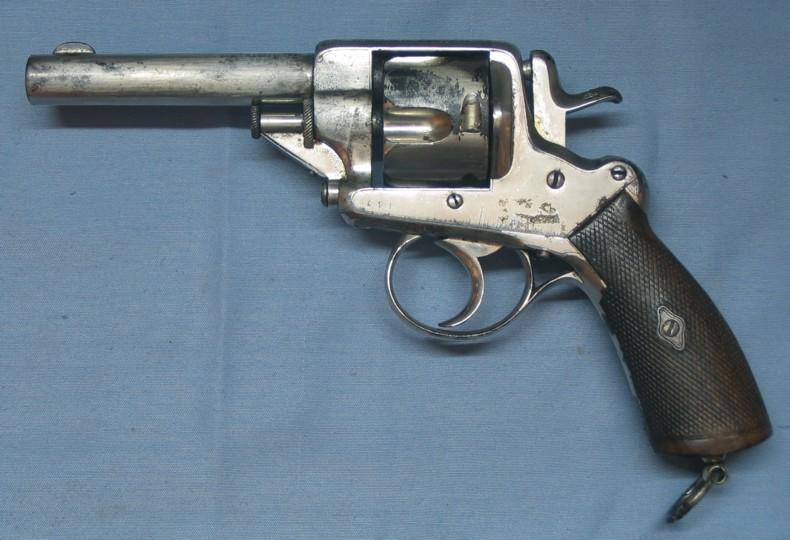
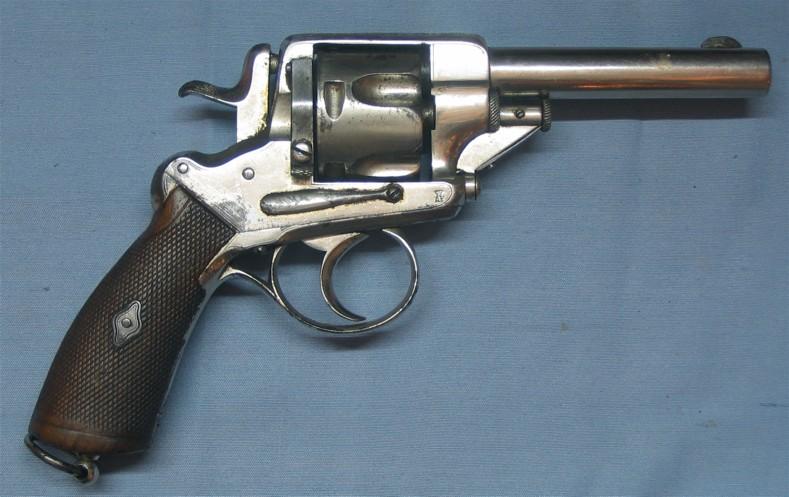
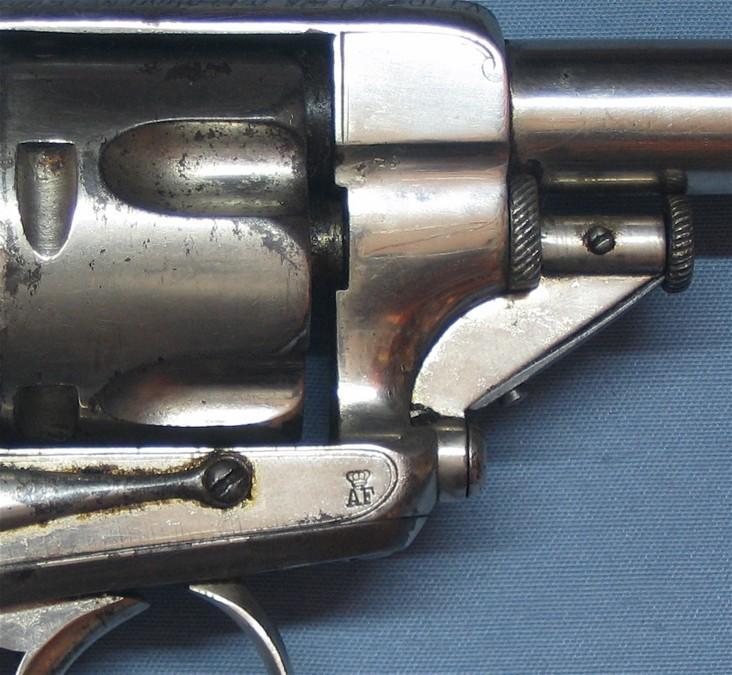
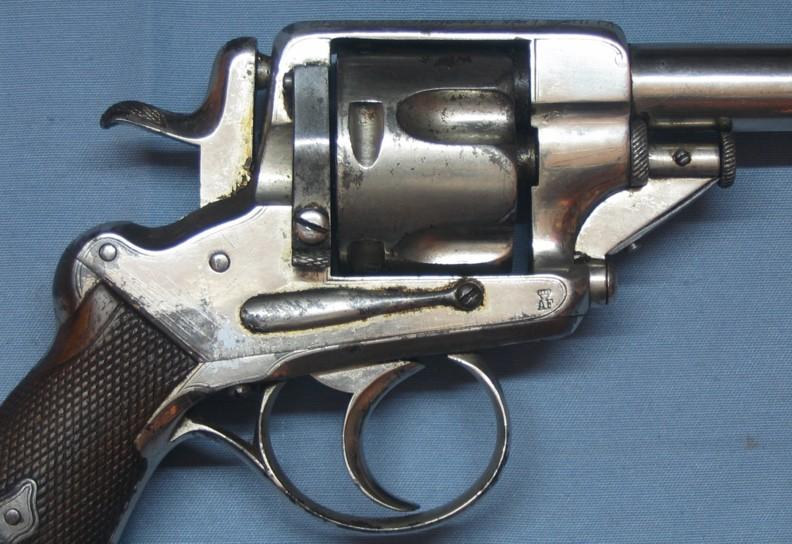

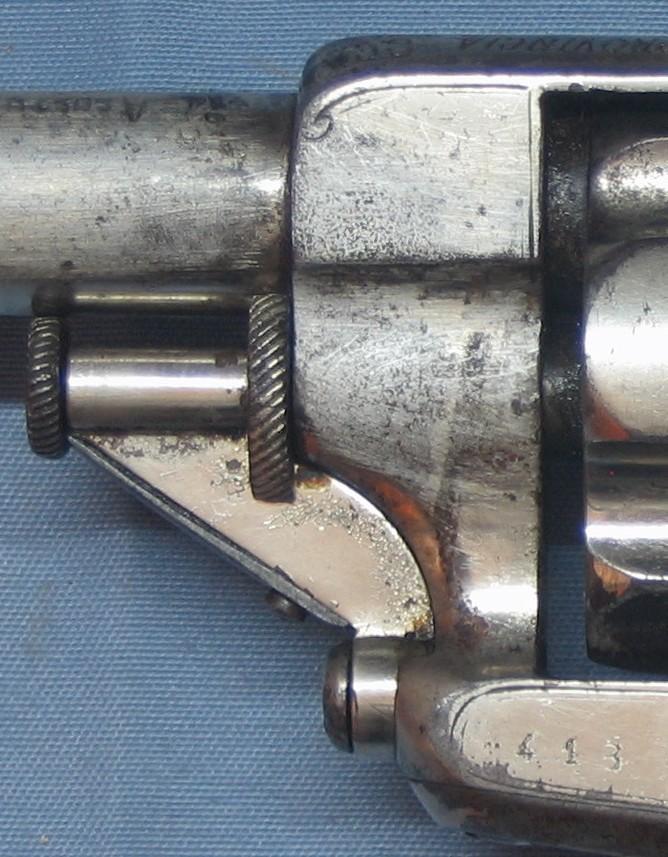
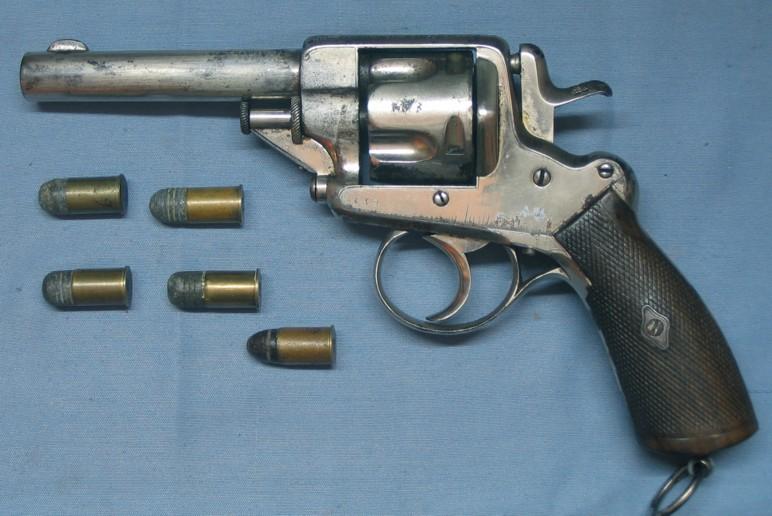
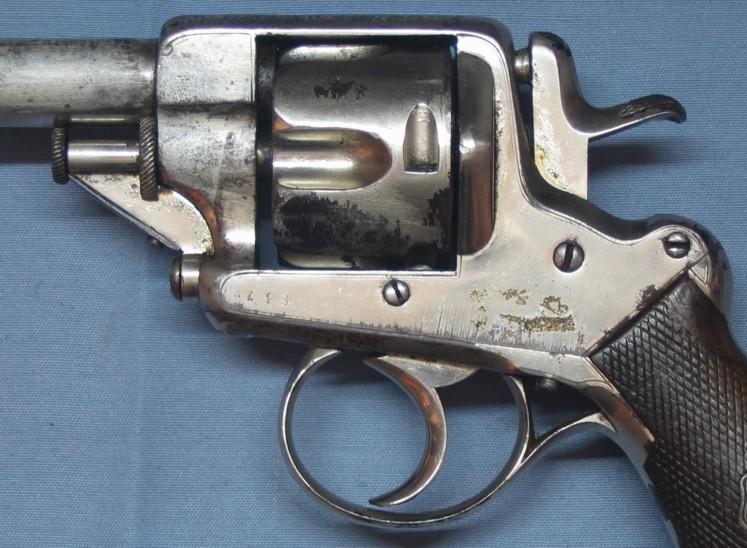
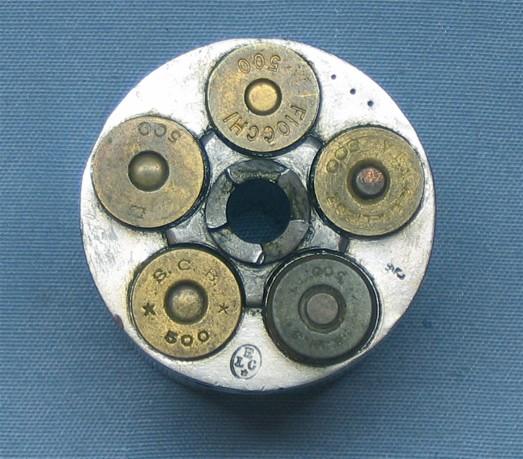
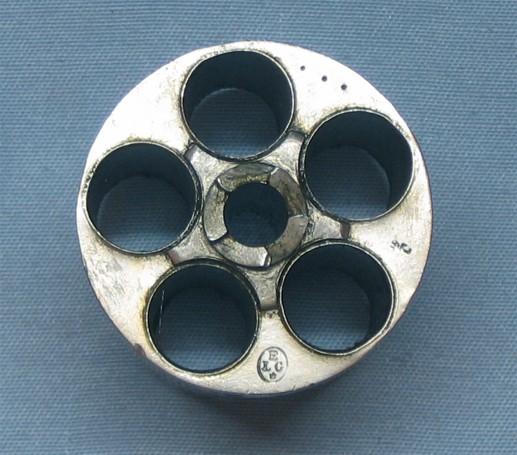
FRANCOTTE Auguste
Auguste
FRANCOTTE
revolver of unknown calibre.
It bears
the hallmarks of the Liège proofhouse, as well as the specific marks of the
manufacturer:
AF
crowned
: mark of
Auguste FRANCOTTE
registered on 20.07.1855.
Marine anchor and rope: brand
FRANCOTTE
registered on 31.12.1875.
![]()
Revolver Francotte (sold by Fauré Lepage)
Revolver Francotte

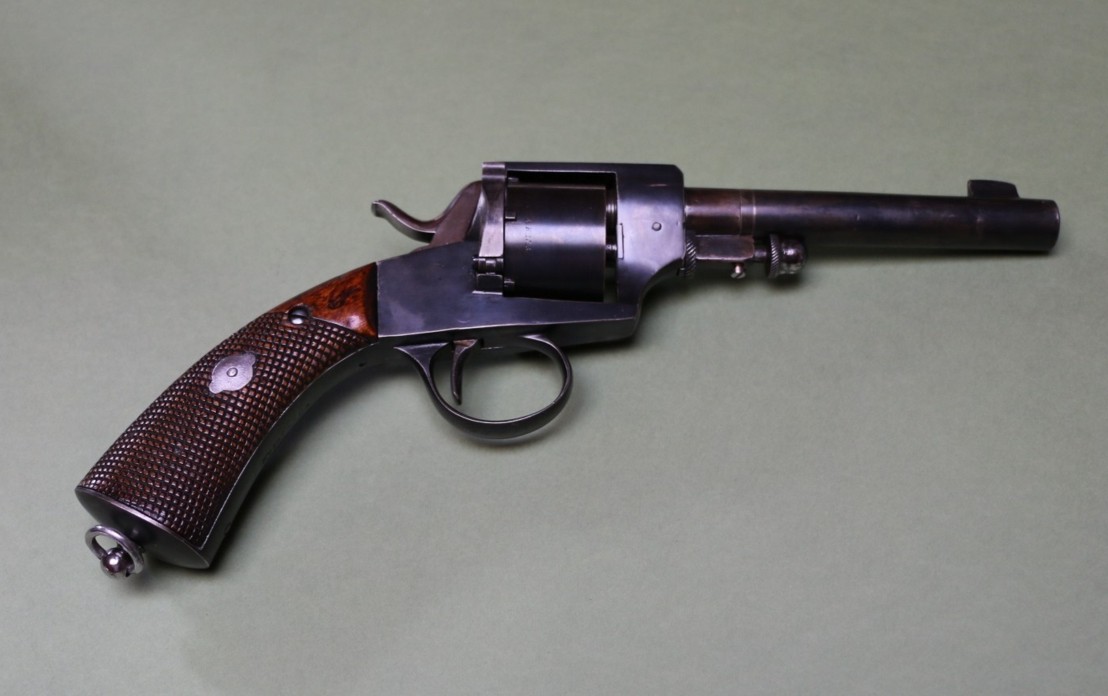
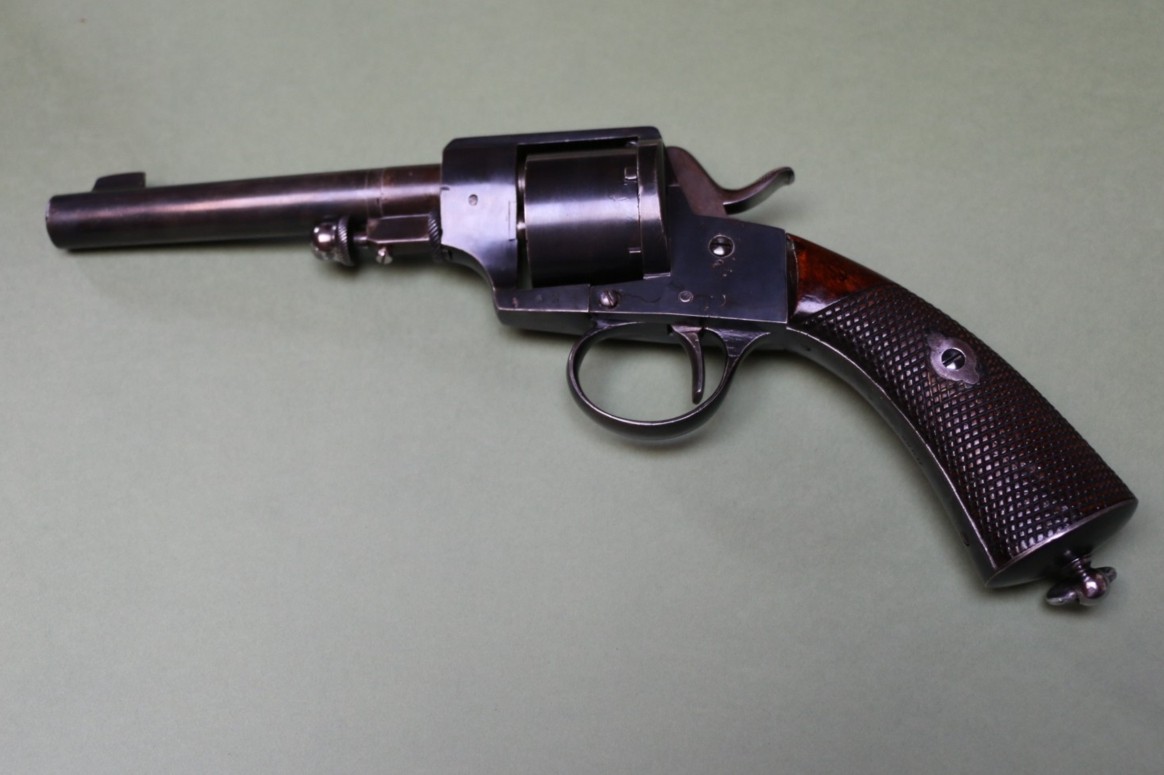

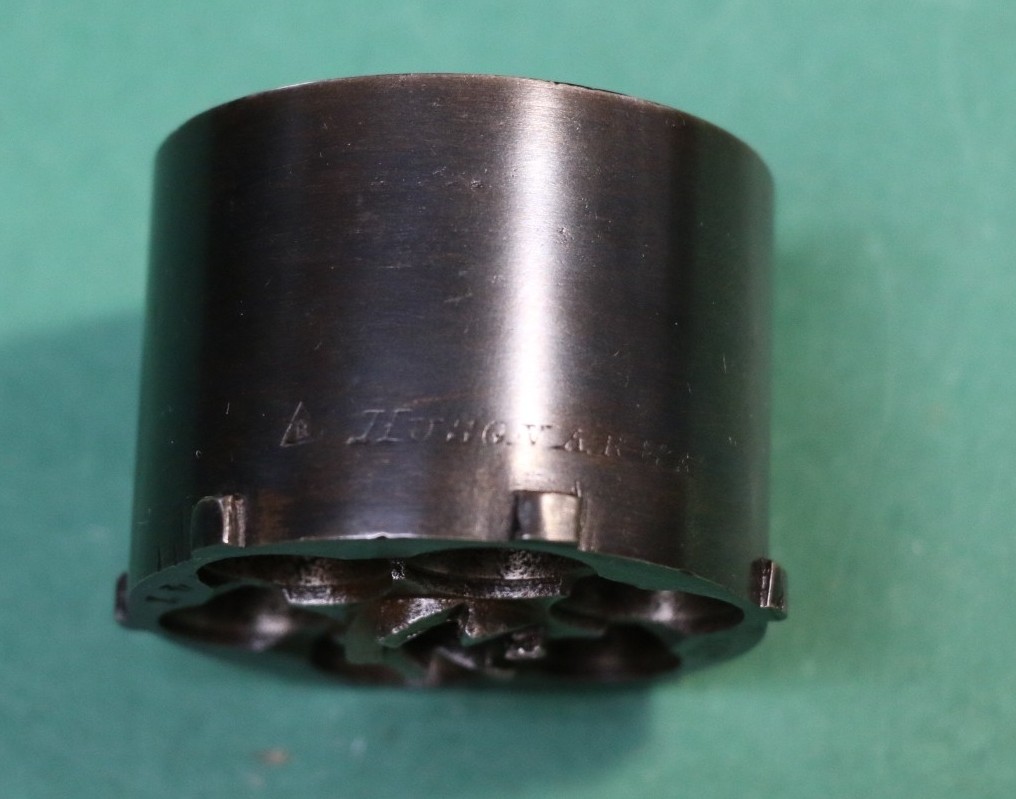
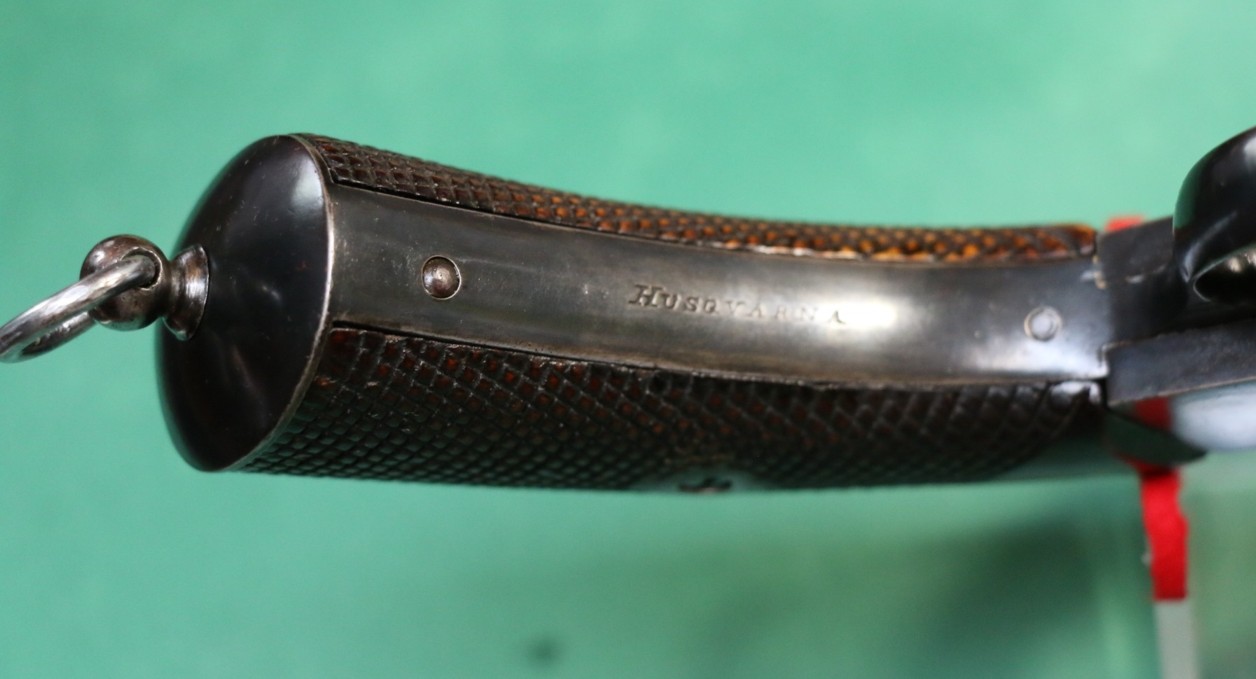
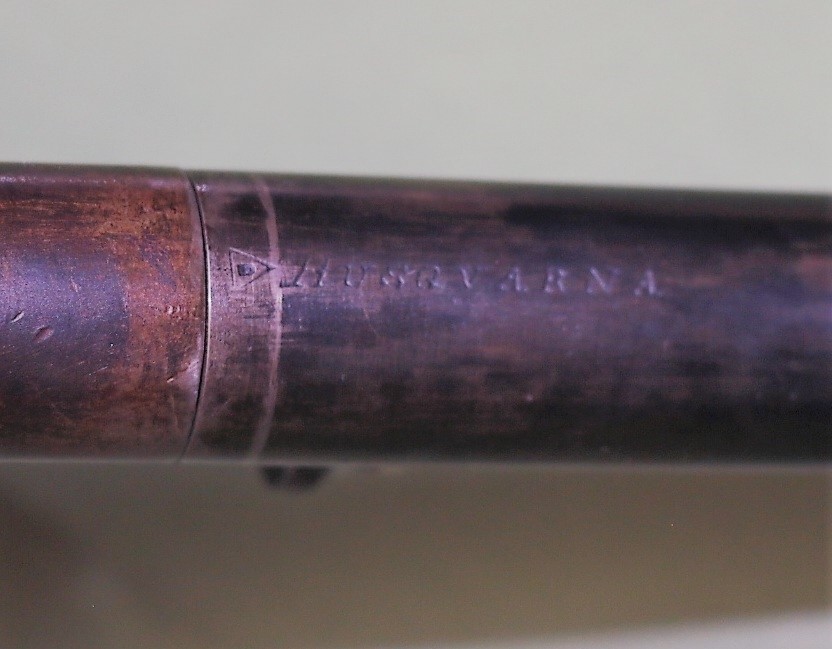
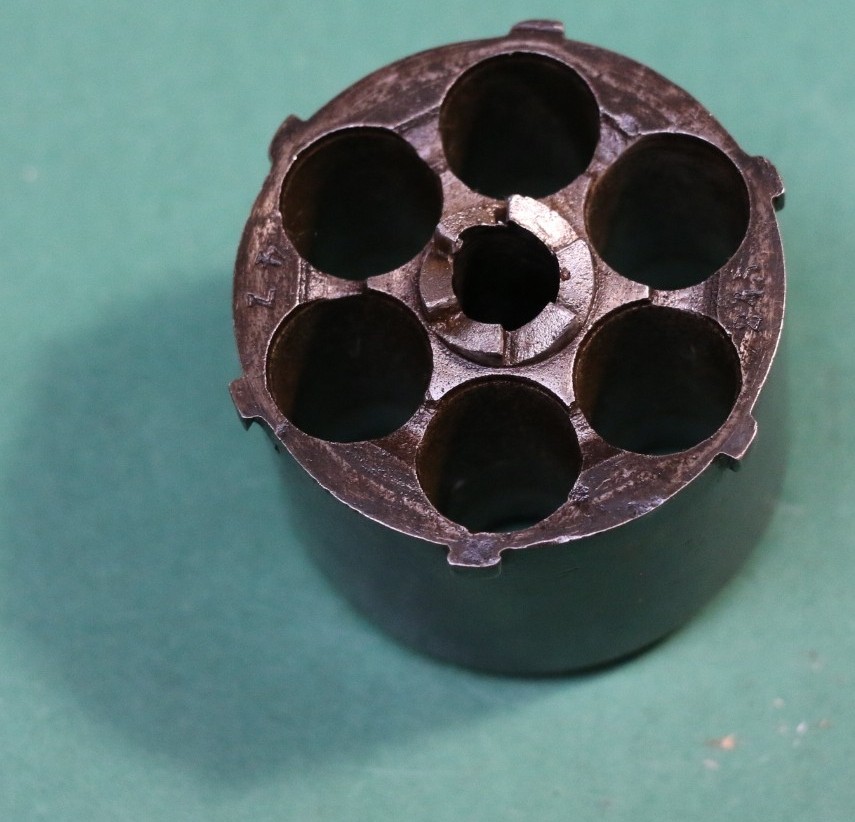
Revolver Francotte
This revolver was designed to receive a knife-bayonet, but I do not have it, I deduce from it that this weapon was manufactured for people in departure for Africa or officers, but in a private capacity.
Max
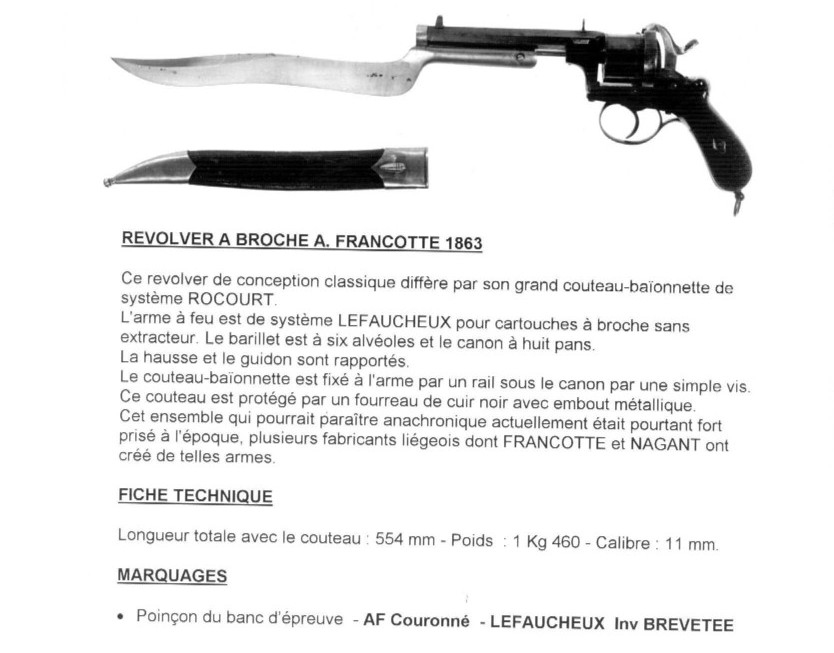

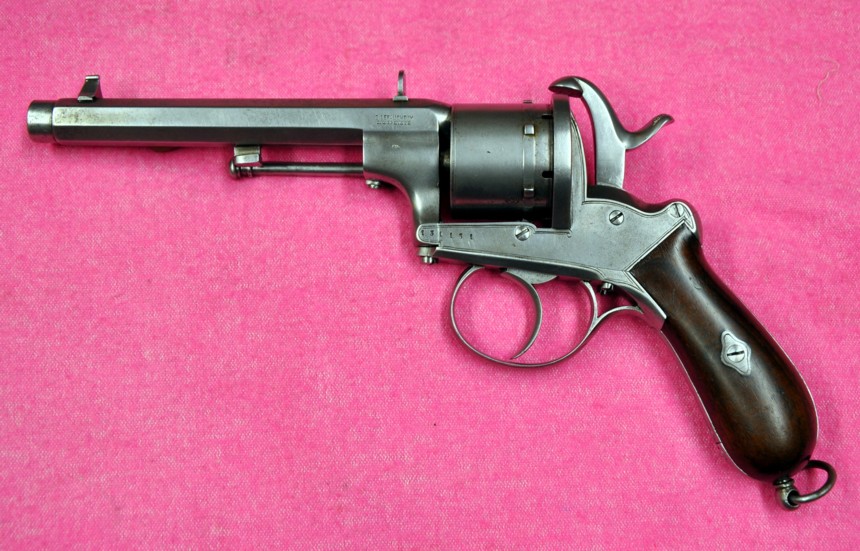
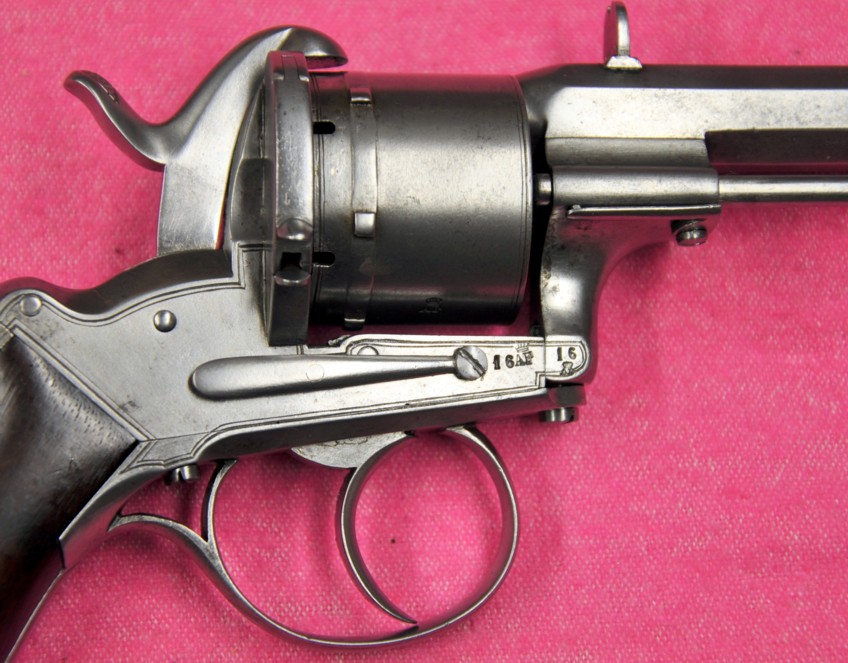
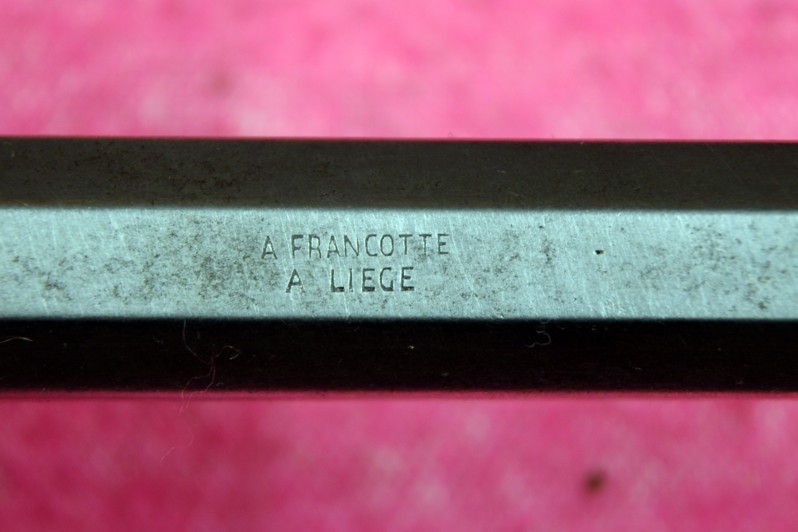
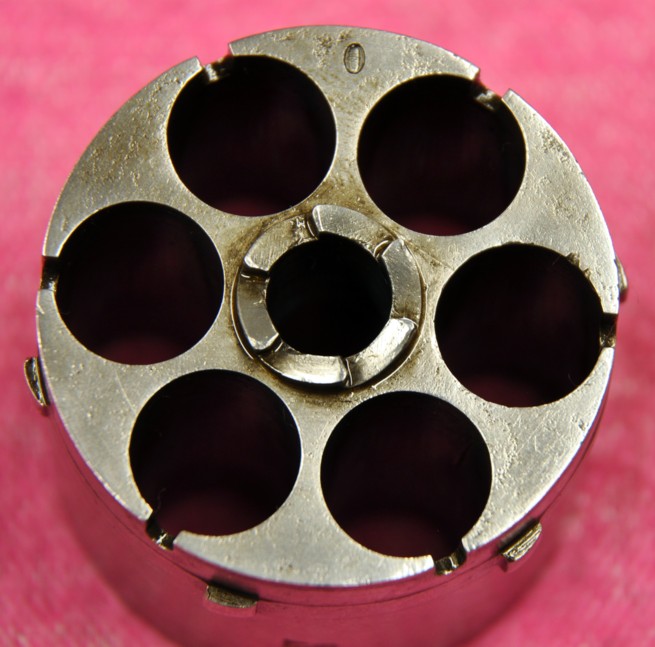
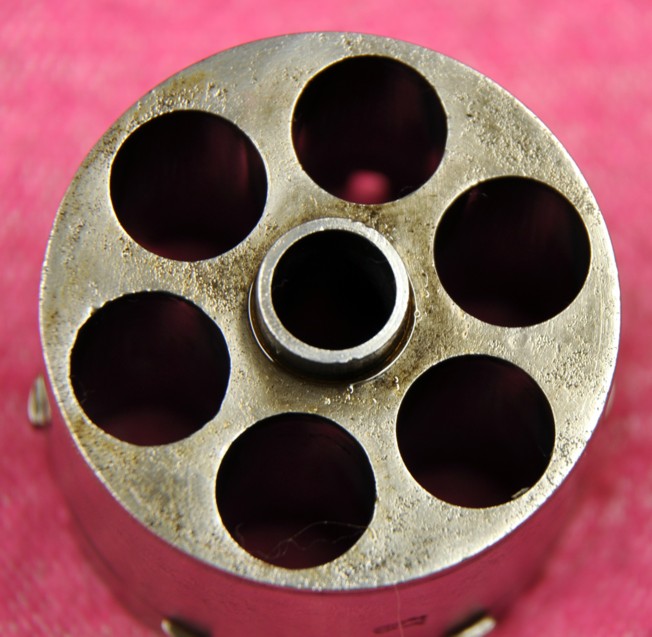

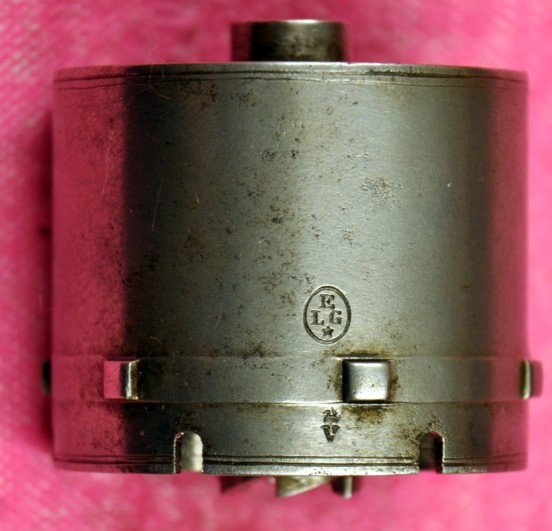
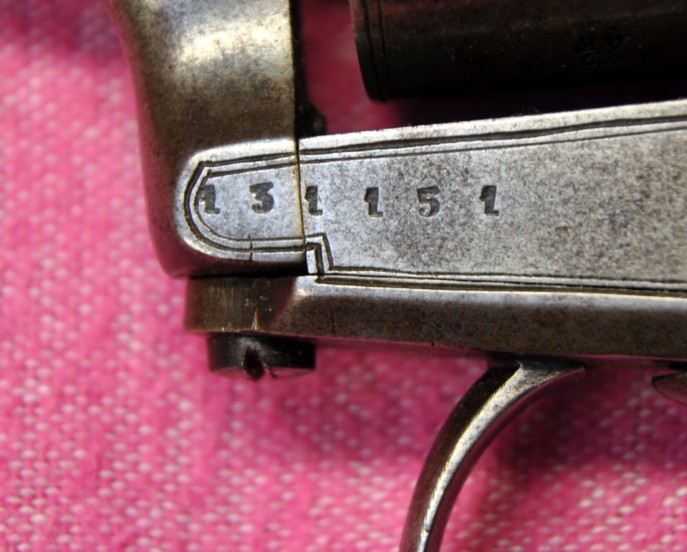

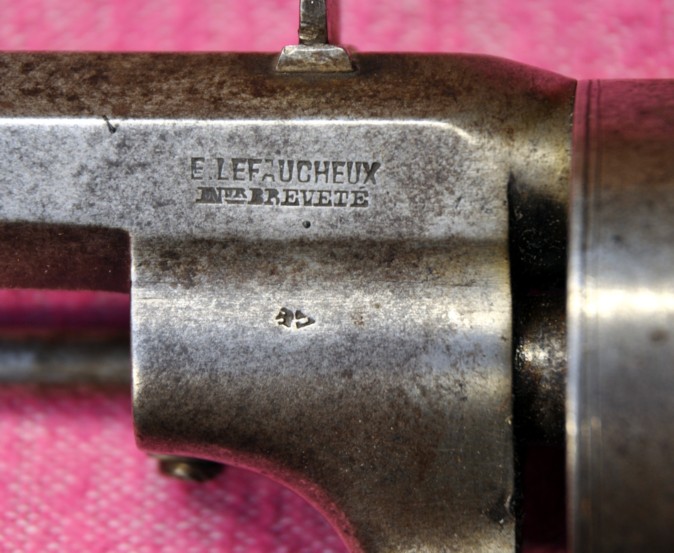
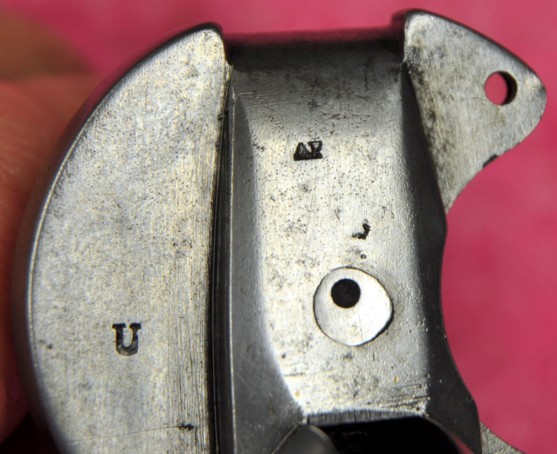
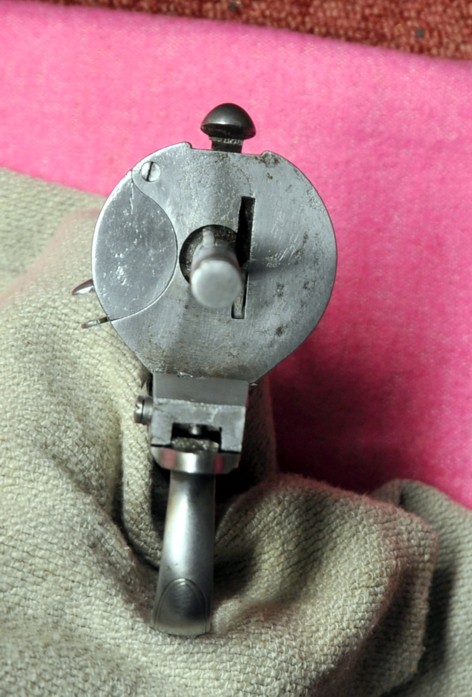
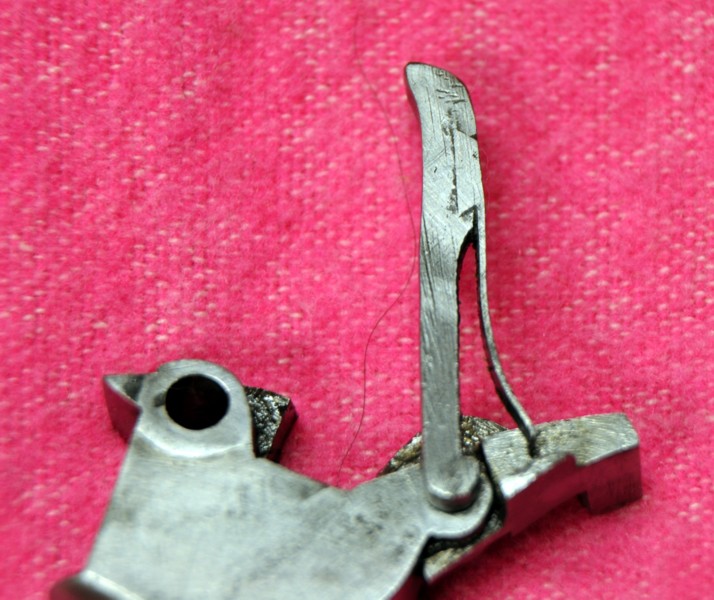
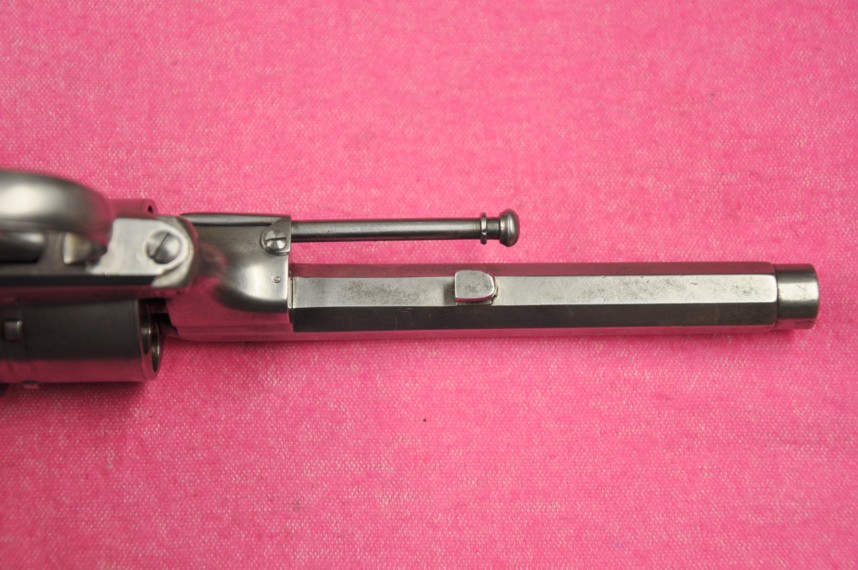
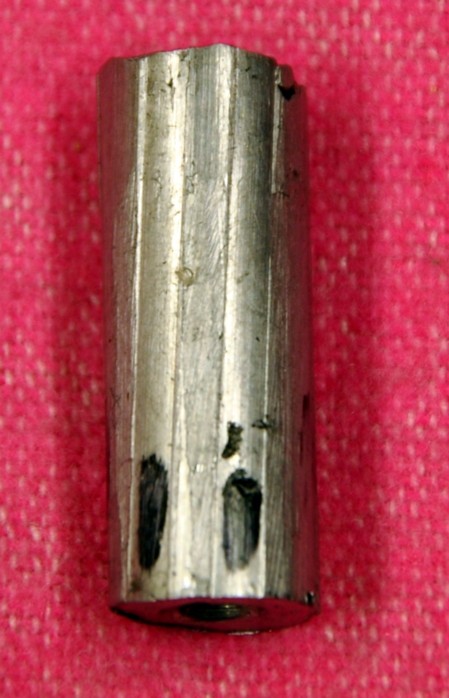

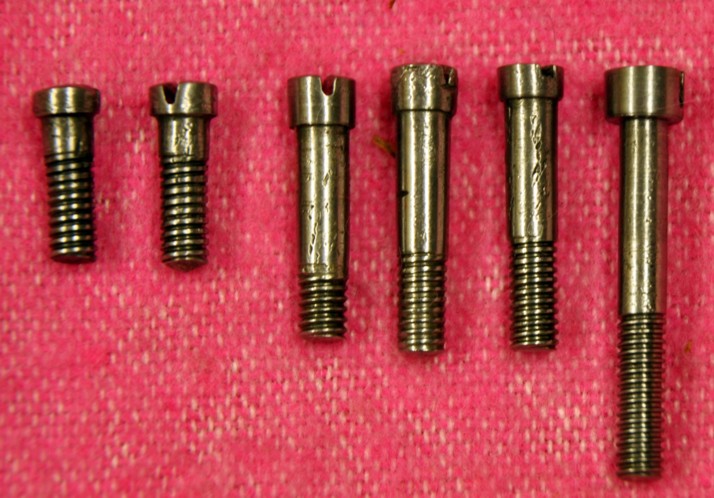
Francotte
Revolver 1870.
Francotte Military Revolver, DA, cal 455, serial # 502 barrel: 165 mm, overall length: 292 mm
Marks: on left side of action behind barrel: A FRANCOTTE (not complete), A LIEGE, 502 on right side of action below cylinder: crown/AF on right side of action behind barrel: marks unreadable on left frame under grip: crown/AF, HC on right frame under grip: R

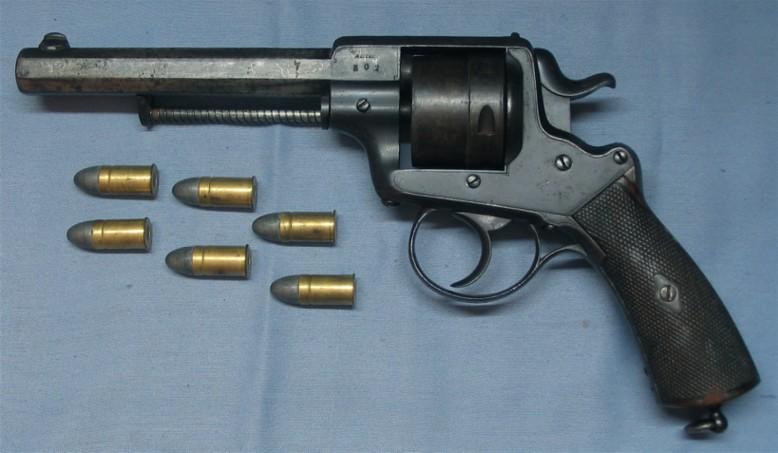
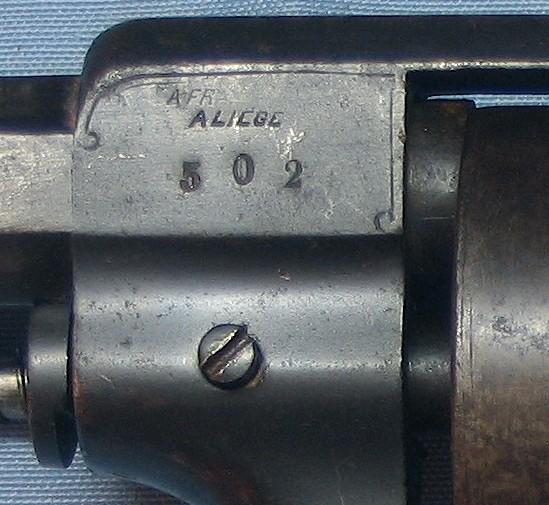
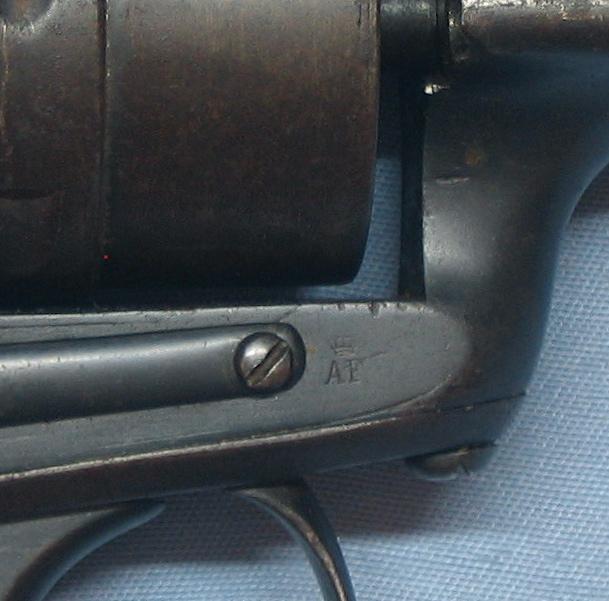


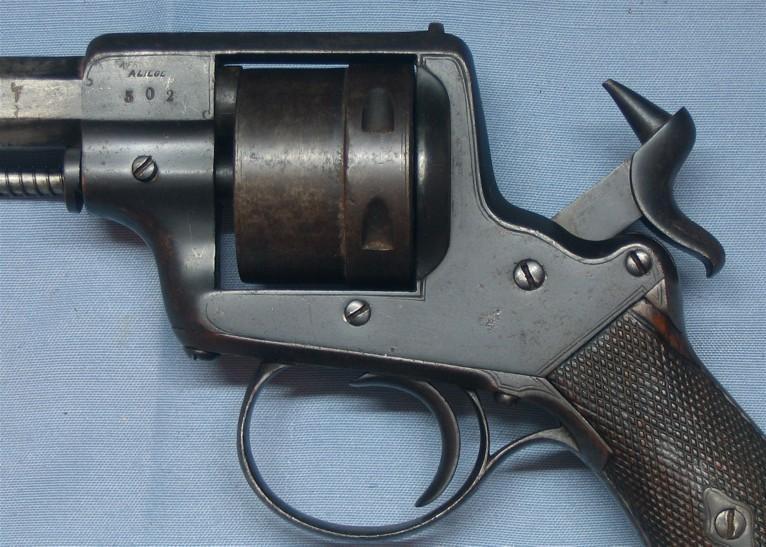
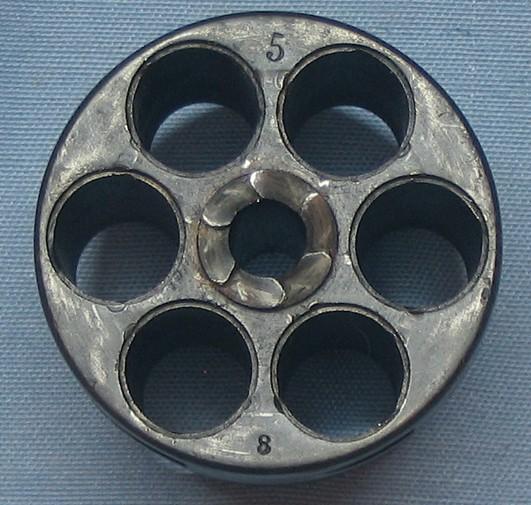
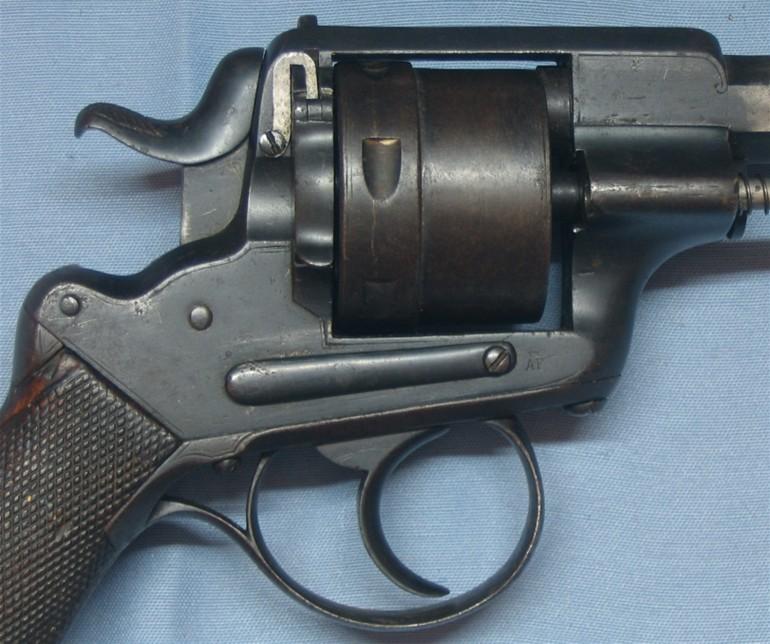
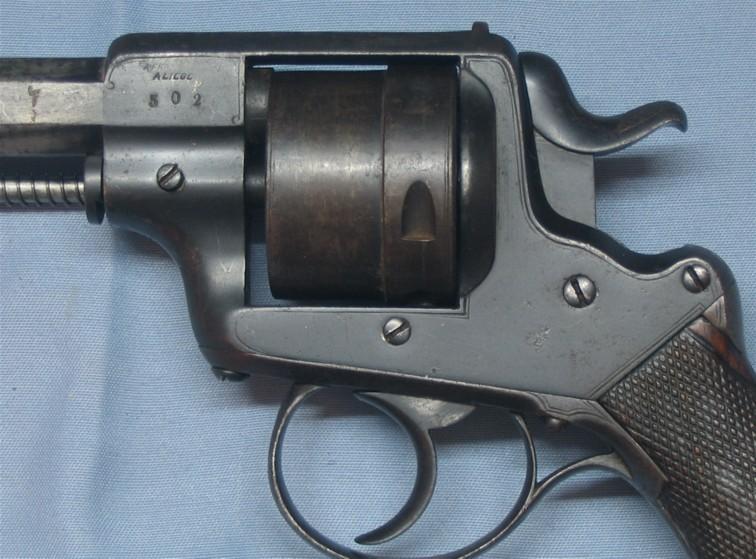

The REVOLVER FRANCOTTE
In the year 1875, the Serbian War Department asked Smith&Wesson for an offer for the delivery of 2,500 topbreak revolvers of the "1874 model" (better known as the "Russian model").Yet the firm order went to the Francotte Company.
The exact number of revolvers ordered by Francotte is unknown, but there is no reason to think that the actual order was different from the formal offer appliance.
As the Serbian Army had officially accepted a number of these revolvers in 1875, the author Muller gave these the name "1875 Model". However, the weapon itself had already been developed by Francotte in 1869. Based on that latter year, that revolver can be considered as the oldest European-made regular service handgun designed for central fire ammunition.
In the same year (1869) the famous Austrian Gasser revolver was issued, which would be adopted in 1870 by the Austro-Hungarian Army.
Both revolvers show a number of similar features, the first being the ejector rod, which was in an own housing attached to the barrel, in order to offer a far better protection against bending.
The most remarkable resemblance, however, is the external flat safety spring, visible on the right side of the frame. That flat spring has a transversal pin on its end, which blocks the hammer in a safety position. Once full cocked, the hammer pushes the spring aside when falling down when the trigger is pulled.
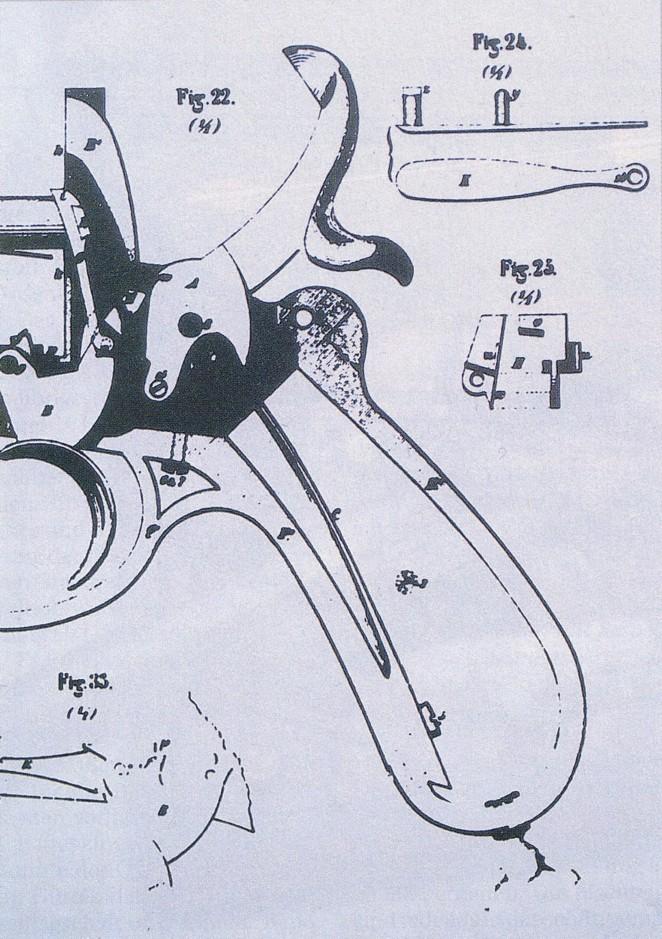
That system had already been patented by Francotte in 1865, and can be observed on innumerable pinfire revolvers. Like the Gasser, those older revolvers show a characteristic open-top pattern made of 3 elements. Due to their conception, these revolvers have always a short aiming line since the rear sight has to be placed ahead of the cylinder.
Francotte innovated by adopting a solid-frame with screwed-in barrel, which made the weapon far sturdier. More, the solid frame allows for a longer aiming line, since the rear sight can be placed on the top strap behind the cylinder.
Another innovation was the spiral spring around the ejector rod, which pushes the latter back in its housing after use.
A remarkable difference between the Gasser and the Serbian Model is the cylinder locking system. While the Gasser cylinder bears a crown of protruding locking cams, Francotte preferred locking notches cut in a strengthening crown around the cylinder. This feature will be currently used in the development of later revolvers.
According to Muller, the actual calibre of the Francotte revolver is the 12 mm; as there is no documentary evidence, we can consider that it could be the .450 as well.
THE REVOLVER SHOWN ON THE PICTURES
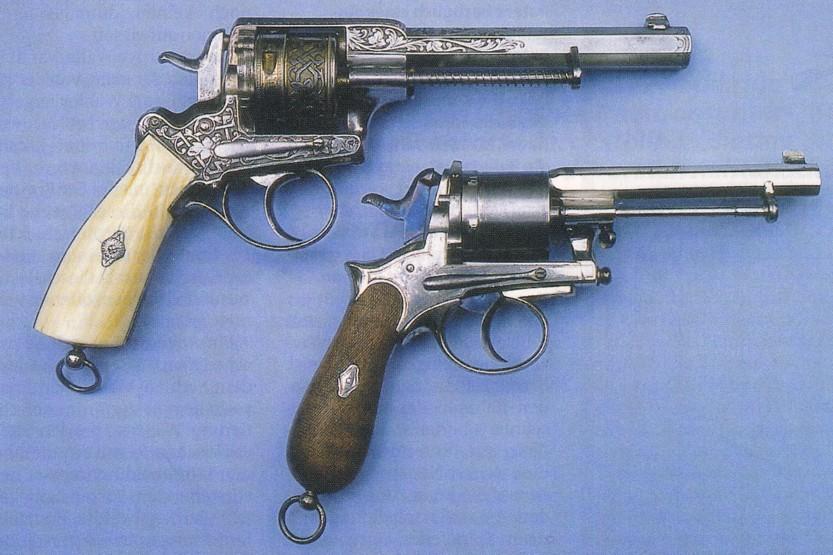
From a rather technical point of view, the revolver described in the above article is identical to the Serbian model. Only the luxury finish makes it different from the plain military version. The gun is richly engraved with arabesques and floral motifs. The gold plating is yet almost gone. The grip plates are of ivory.
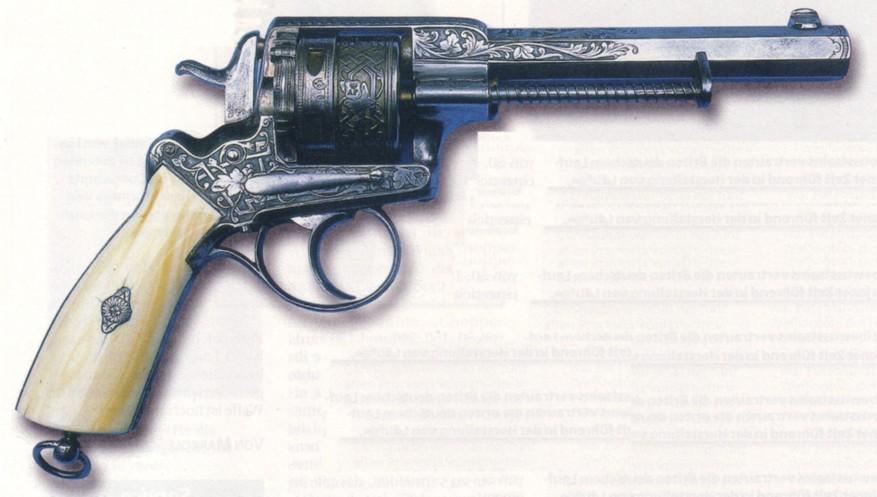
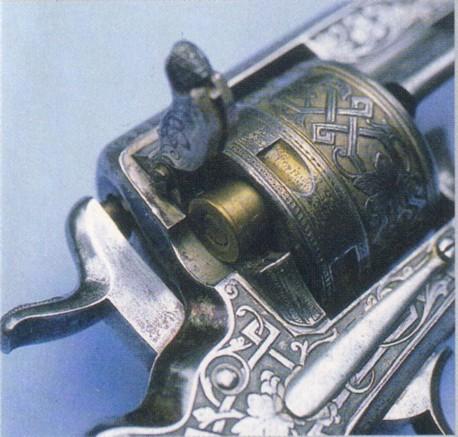
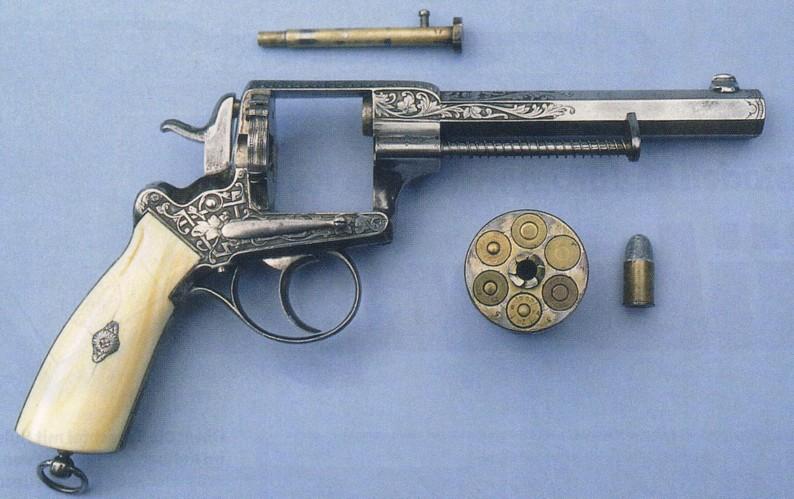

The .450 calibre is stamped on the frame. This ammunition has been developed in 1868 for the first Adams revolver designed for central fire cartridges. The cartridges were available by Fusnot in Belgium and by SFM in France.
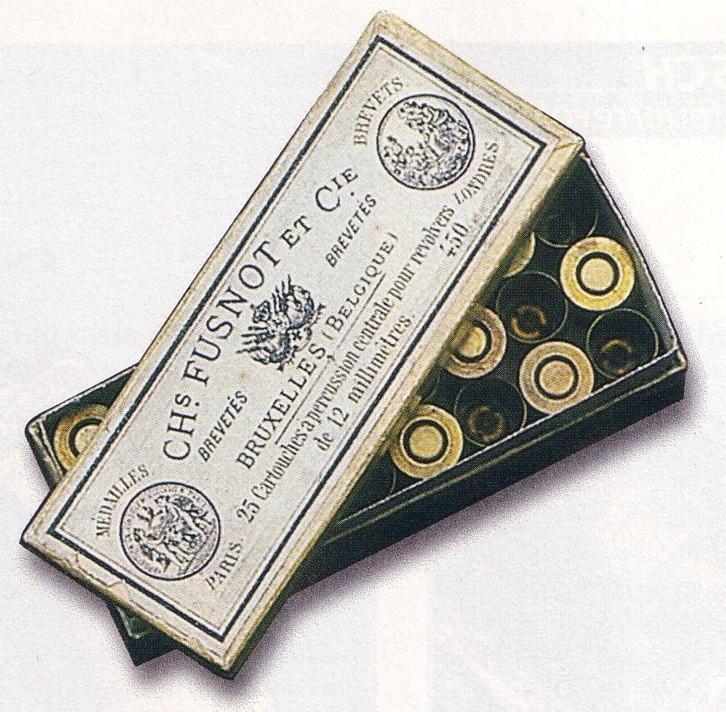
The Francotte logo, a crown over the initials AF, can be seen on the right side of the frame, as usual. It looks like the stamps have been put on the gun first and then integrated into the engravings.
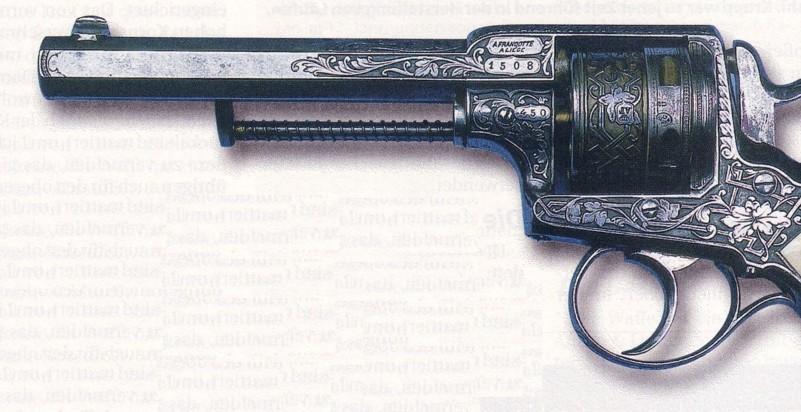
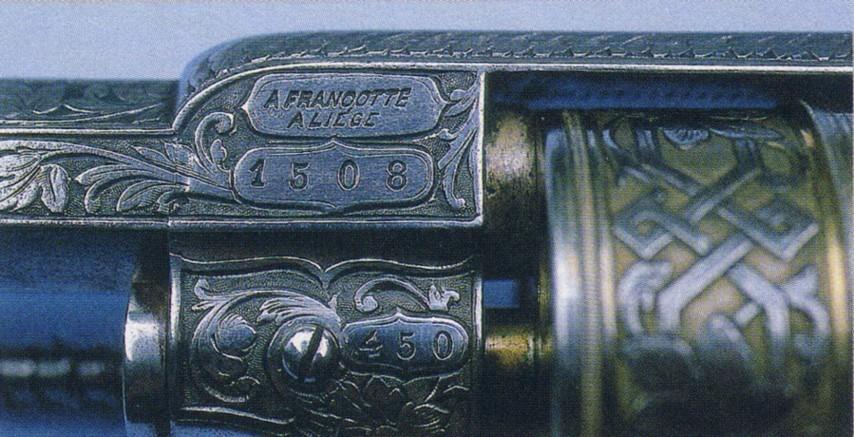
The maker's logo "A FRANCOTTE A LIEGE" in two lines is visible on the left side of the frame. The serial number is stamped below. The Serbian model bears the same logo. The proof stamps are the official Liège black powder ones. On the cylinder between the locking cams is the typical oval with the letters ELG. The lack of a crown above the oval indicates a pre-1893 manufacture. Below the oval is the controller's initial U surmounted by a star, which indicates a post-1877 manufacture. The name of the retailer "G. BIGOT AU HAVRE" is stamped on the top strap.

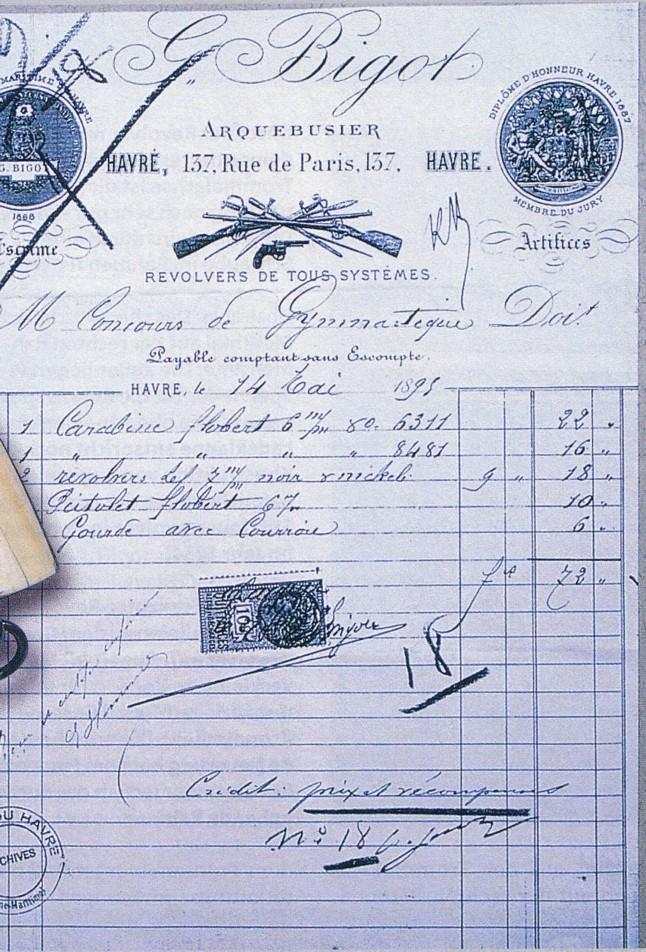
The Liege company Auguste Francotte has a long history. Founded in the early 19th century with the purpose of mass production, it oriented more to luxury hunting weapons during the early 20th. Production in the Liege shop ceased a short time ago, but the name still exists. The Francotte weapons are renowned worldwide. The example of the first European made central fire regular service revolver witnesses the important participation of that company in the development of modern handguns.
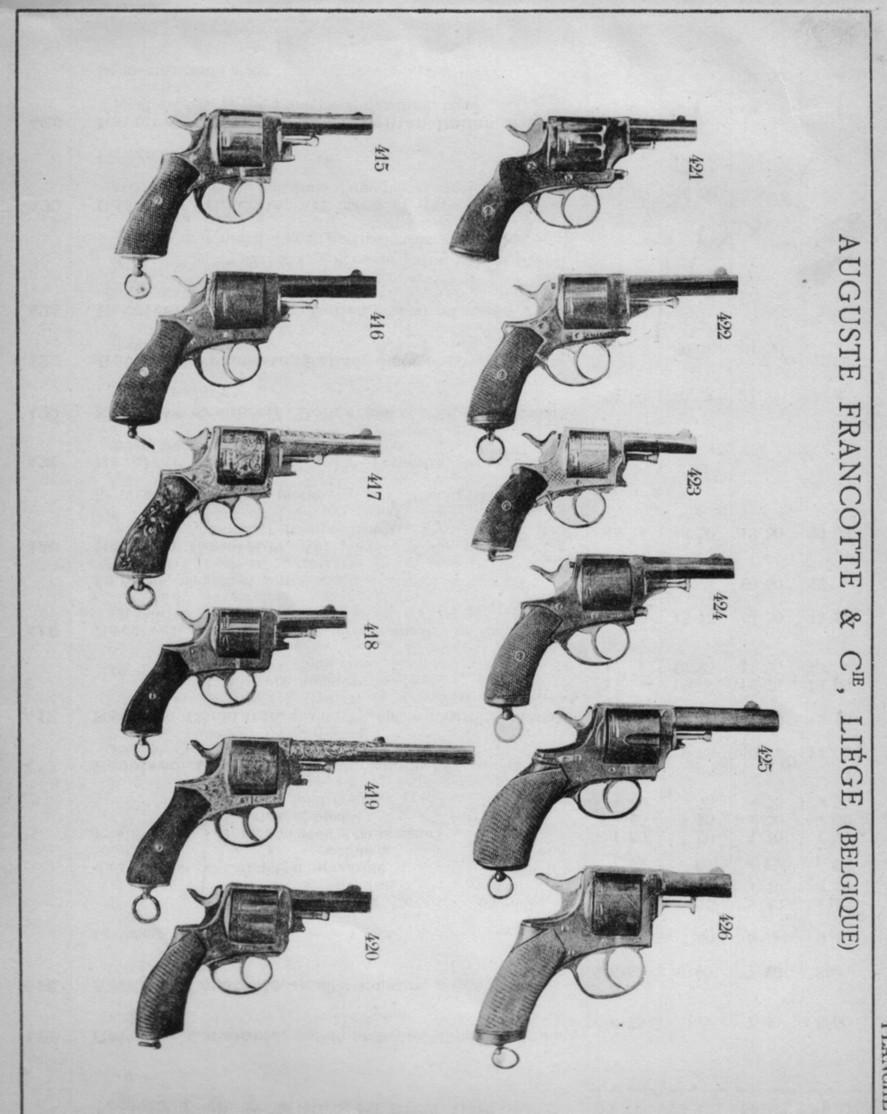
|
REVOLVER BULL DOG R.I.C Ce revolver Bull-dog type Royal Irish Constabulary de calibre 380 à six coups présente des plaquettes de crosse en noyer en forme de bec de corbin. Elles sont finement quadrillées. Il présente également une sûreté un peu inutile sur un revolver mais souvent réclamée par la clientèle allemande. Il a été fabriqué en début du XXe siècle par la maison A. FRANCOTTE à LIEGE. L’originalité de cette arme réside uniquement dans l’emplacement inhabituel du guidon au premier tiers du canon à partir du bâti. La raison en est fort simple, il s’agissait de tourner les règlements douaniers sud-américains sur les armes courtes et de recouper le canon à bonne longueur une fois la frontière franchie. FICHE TECHNIQUE Longueur : 190 mm – recoupé 120 mm – Hauteur : 100 mm – poids 550 grs. MARQUAGES AF Couronné : - Auguste Francotte R Couronné – N étoilé – ELG dans un ovale couronné : poinçons du banc d’épreuve liégeois. GG
|
Revolver Francotte 12 shots.
Francotte made 12-shot pinfire revolver. Large frame, open-top design with fluted cylinder.
Floral motif engraving on the frame, cylinder, barrel, trigger guard, loading gate and some other small parts.
Very nice dark walnut two-piece wooden grips. 6.25 inch long octagonal barrel. Maker markings on the top of the barrel, "A. FRANCOTTE A LIEGE" (Francotte revolvers were among the best European revolvers at the time). Left side of the barrel is marked, "E. LEFAUCHEUX IN-er BREVETE".
House of Liege proof on the cylinder.
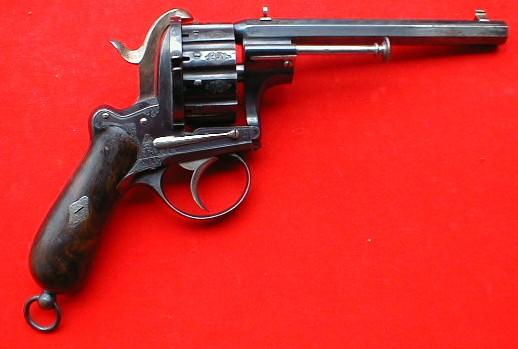
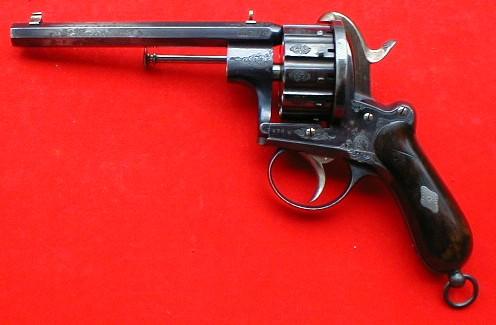
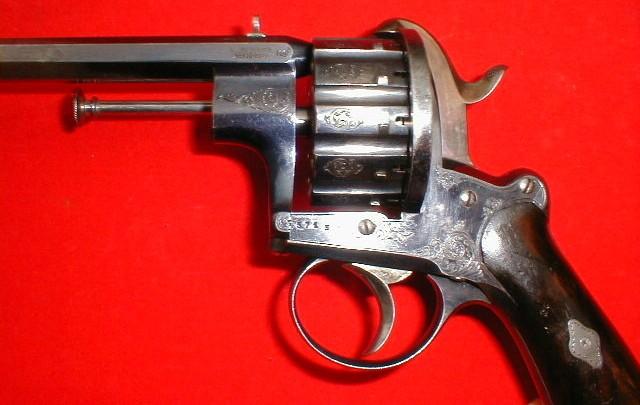

Francotte Auguste & Cie
REVOLVER LEFAUCHEUX/AUGUSTE FRANCOTTE/TRIPLES ACTION
Total weight: 958 grams
Barrel with 8 sides of 155 mm with 2 sights.
Entry cylinder: 12 mm
Exit barrel: 11 mm
Date: after 1862 (deposit of the patent)
On the top of the octagonal barrel, A. FRANCOTTE A LIEGE.
On the left side of the barrel E. LEFAUCHEUX Invr BREVETE.
On the finely decorated cylinder, AF with a crown, ELG in an oval (1811-1893) and G crowned.
On the right of the carcass and the junction of the barrel 2 times AF crowned.
Stock in wood (?) finely squared with ring.
On the carcass of the stock, in top, AF and in bottom one G crowned.
The unit finely engraved in perfect operating condition.
Bought in December 2005 at Drouot in Paris
Guillaume VM
Revolver Francotte
Many thanks to Pierre Rolly for the pictures.
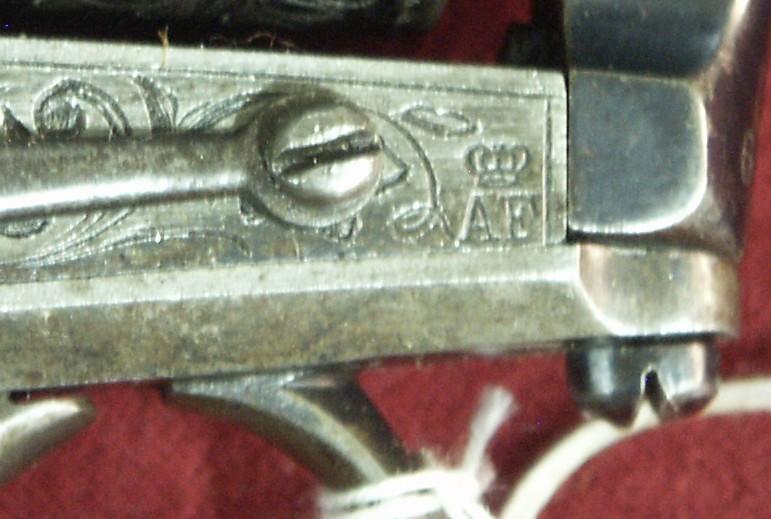
Francotte patent Pryse
Cal. 45

Francotte "Top Break"
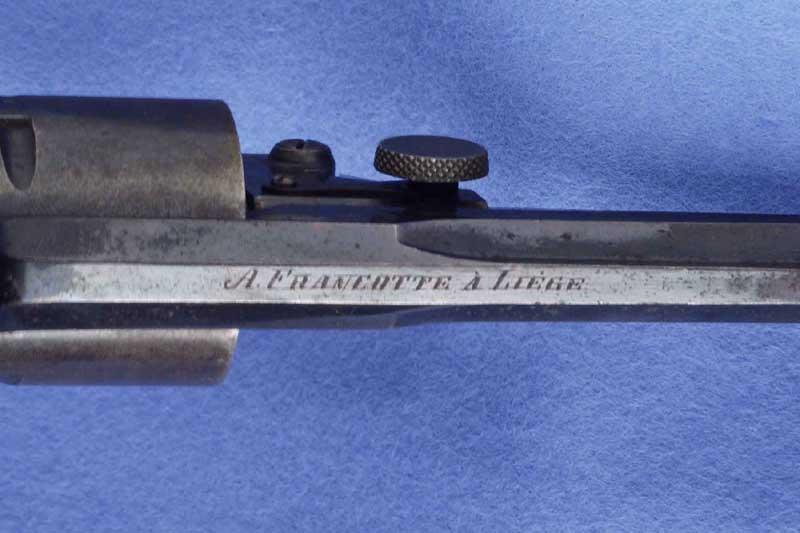
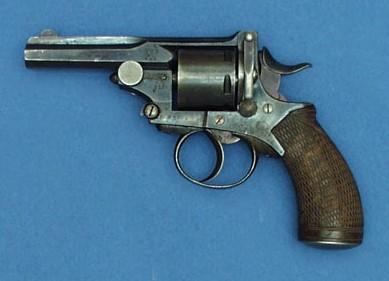
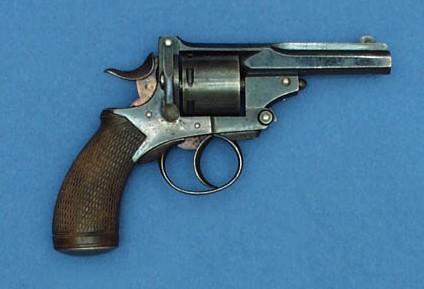
Vélodog Francotte
This is a beautiful gold engraved AUGUSTE FRANCOTTE & COMPANIE, LIEGE, Belgium velodog. Distinctive long case cartridge. Being credited to the French gunsmith Galand in 1894. The gun was initially intended to protect velocipedists (cyclist) from dogs; witch was much more of a problem at the end of the nineteenth century. Eventually however the guns became classed as self defence weapons. Most velodog guns have enclosed hammers and folding trigger were customary. The principal feature distinguishing velodogs from other type of pocket revolvers was the elongated cylinder chambered for the slender 5.5 mm center fire cartridge. Later this gun was manufactured in .22 and 6.35mm.

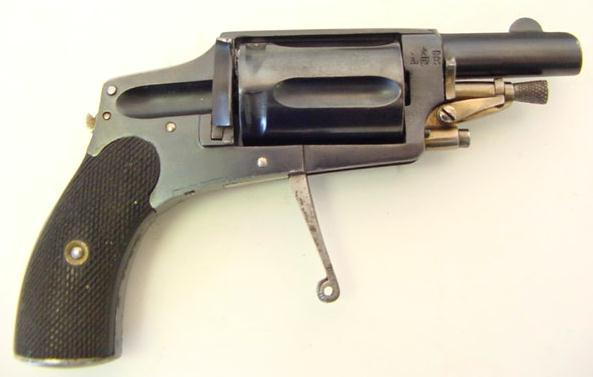
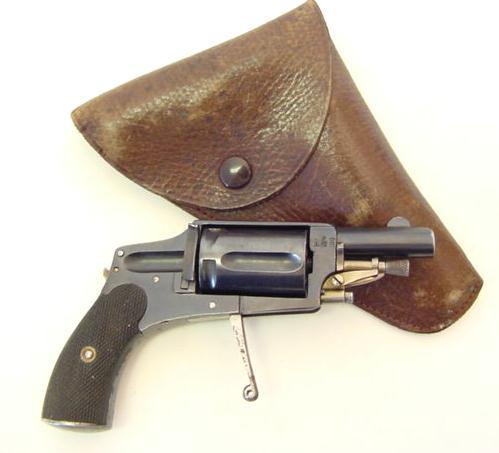
Revolver hammerless Francotte
The same kind of revolver but engraved and decorated with nets of fine gold.
This one is of caliber 6,35mm.
